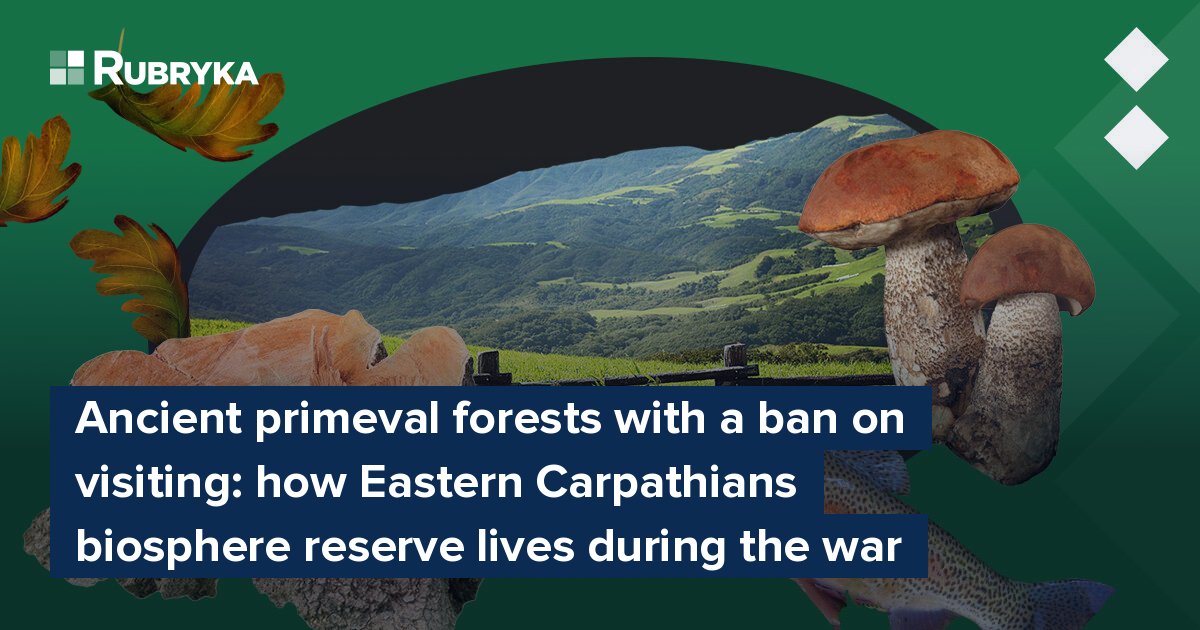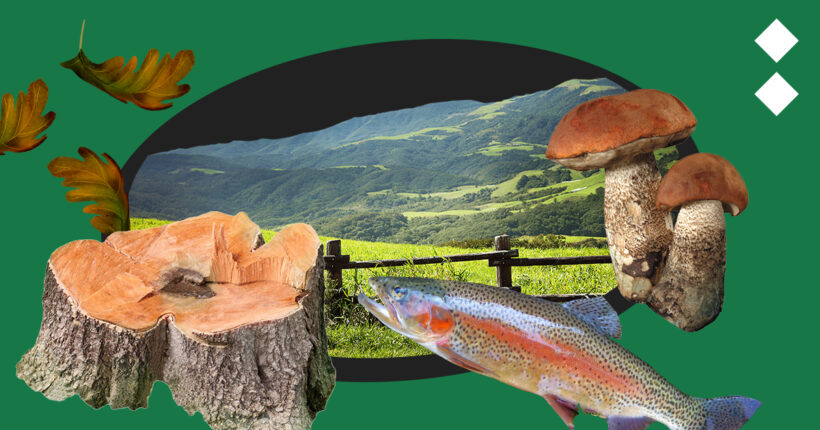
What is the problem?
The second year of the war is coming to an end, and all layers of society have been affected by it. Nature has also felt the impact of the war — fires in the occupied territories, centers of ecosystems suffering from shelling, piles of destruction waste, and ammunition left at the sites of hostilities. In addition to the direct impact of the war, there is also an indirect one.
Ecorubric launches a series of articles about UNESCO biosphere reserves — occupied, on the demarcation line, and deep in the rear. We tell how the war affects these territories so that the world learns more about the lives of people and nature in Ukraine.
What is the solution?
The Uzh National Park
Transboundary UNESCO biosphere reserve Eastern Carpathians covers an area of 213,211 hectares, three national parks, and three landscape parks in three countries. In 1998, the territories of the Uzh National Park, the Nadsianskyi Regional Landscape Park as part of the Boikivshchyna National Nature Park from the Ukrainian side, were added to the already existing Bieszczady National Park reserve, the Cisniańsko-Wetlinski and Sian Valley landscape parks in Poland, and as well as the Poloniny National Park in Slovakia.
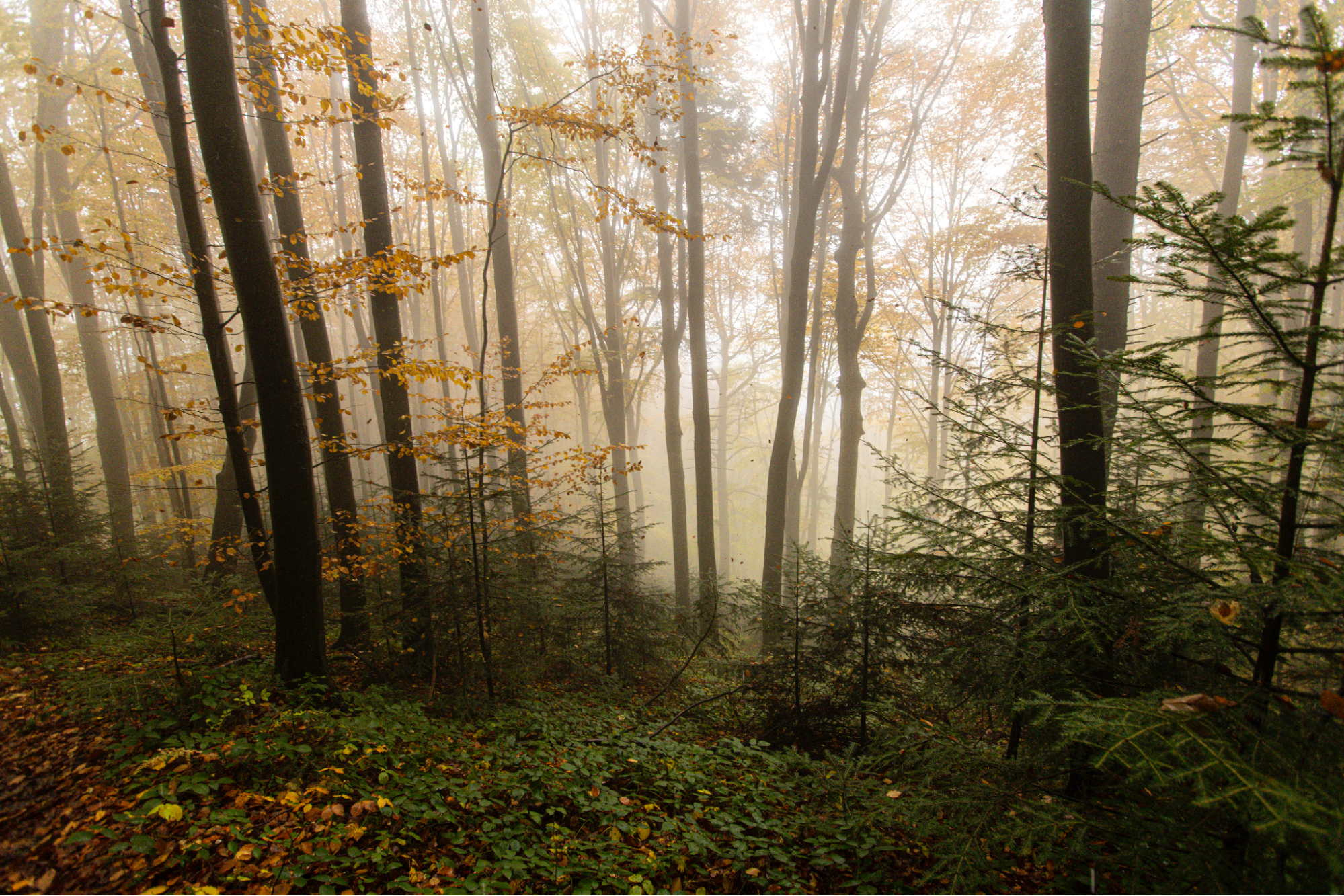
This part of the Carpathians is a center of ecosystems that are unique in their structure and cannot be found anywhere else in the world. It is here that the Black Sea-Baltic watershed passes. Standing between two rivers, one can observe how one sends its waters into the Black Sea and the other into the Baltic Sea. On the Ukrainian part of the reserve, there are many ancient churches built in some places more than 200 years ago. This is where the Carpathian Wooden Architecture Route, joint actions to preserve and promote the historical and cultural heritage of the Ukrainian-Polish border, begins. However, the principal value of the reserve is untouched ancient beech forests.
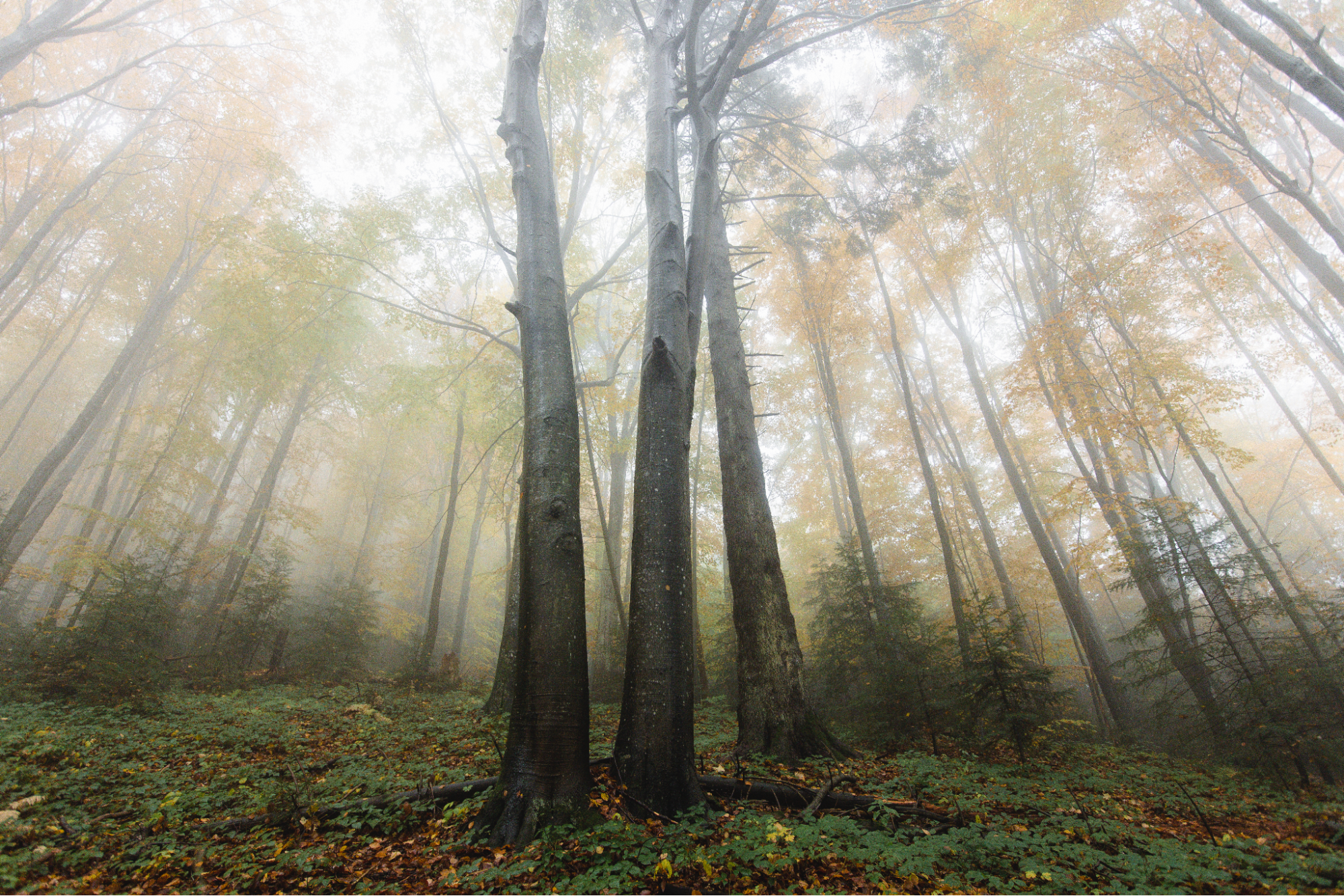
This area forms the core of Europe's ecological network and is extremely important for the region, but you can only understand what these areas really are by visiting them.
A long, long road and closed areas
Uzh National Nature Park is the westernmost park in Ukraine.
After overcoming dangerous mountain serpentines, roadblocks are encountered on the way — an integral part of the war in Ukraine, which has been going on for more than nine years. Due to military operations, it is not easy to get to the Uzh National Nature Park, even though it is almost the farthest point from the front line in Ukraine.
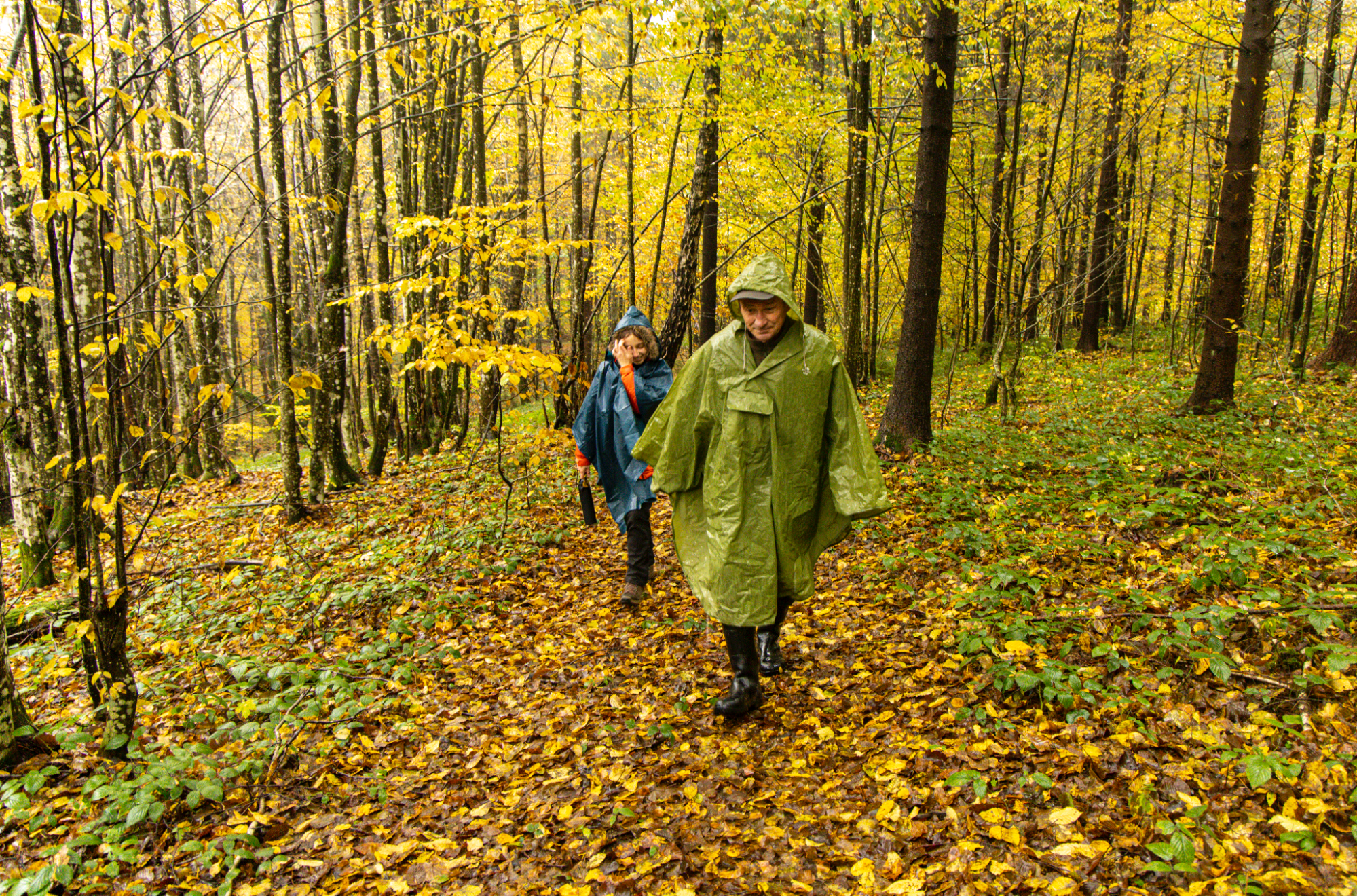
Proximity to the border is the first and main obstacle to visiting the reserve from the Ukrainian side. All visits must be coordinated with the State Border Service, which is the reason for the decrease in the number of tourists in the region.
The deputy director of Uzh Park, Inna Kvakovska, says that only three to four of the 17 eco-trail routes are available now. The rest are closed due to the ban on visiting the border areas. Because of this, the park does not receive the profits it could count on before the start of a full-scale war. In addition, there is a lack of funds for another reason — financing of environmental protection institutions for the state during the war is one of the last priorities.
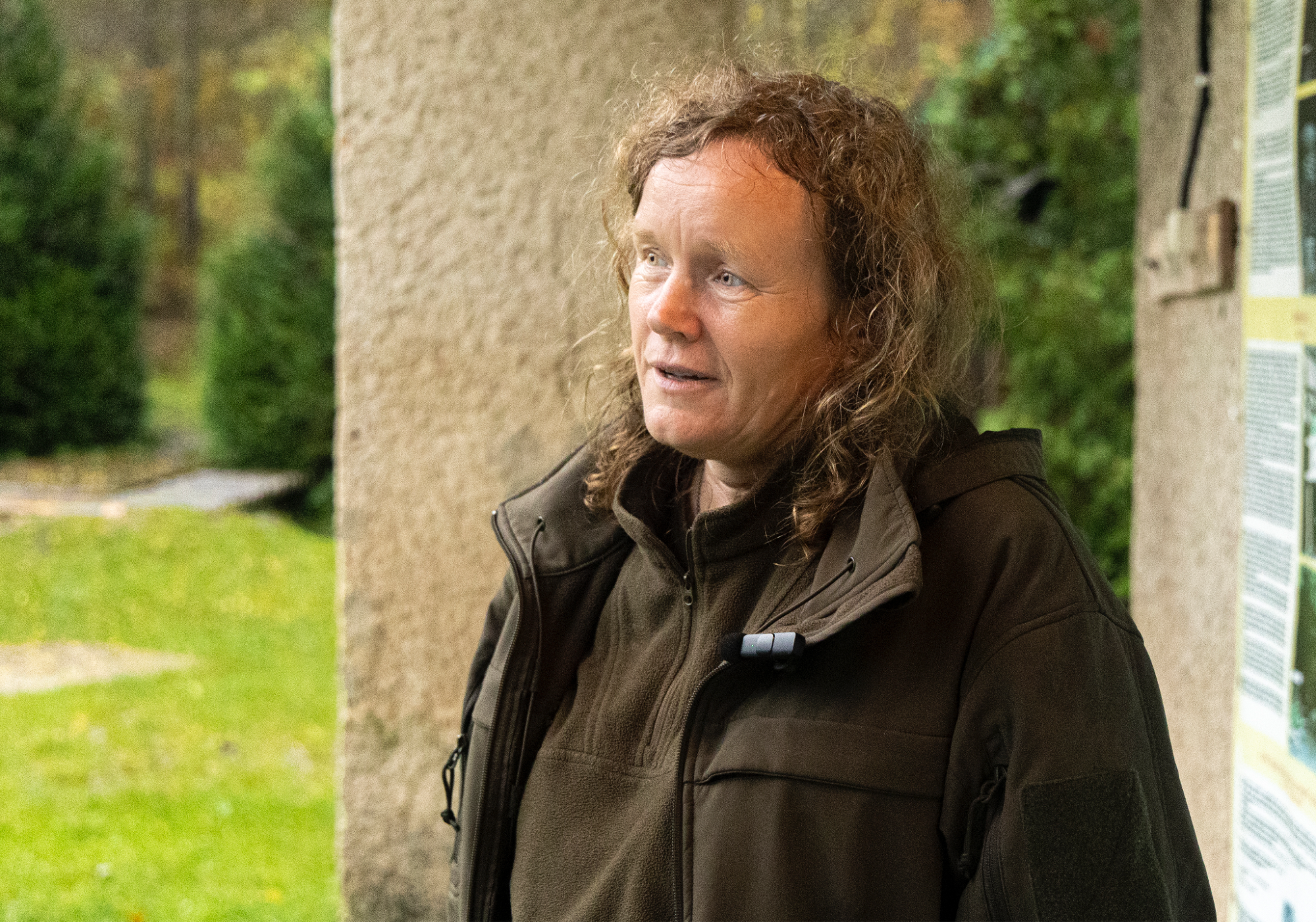
Inna Kvakovska, deputy director of the Uzh National Park, spoke about the park's problems: lack of income due to a decrease in the number of tourists.
The situation is similar in the Boikivshchyna National Nature Park, which is also on the border. To get to the source of the Sian River, along which the Ukrainian-Polish border stretches, and near the source of which one of the eco-trails of the park runs, the visit must be agreed upon with the border service, special passes must be obtained, and travel must be accompanied by the military only.
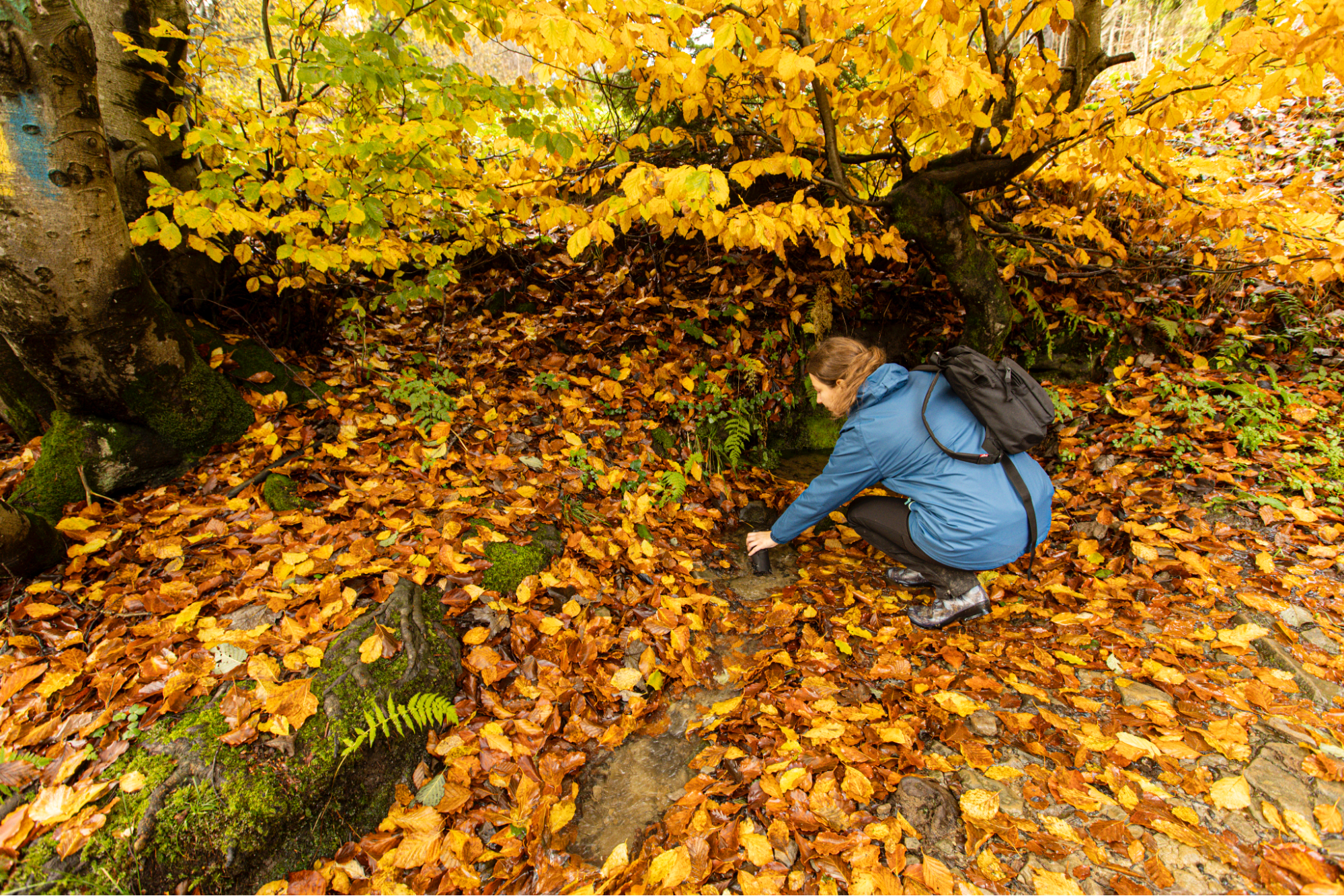
The flow of the Sian River in the Boikivshchyna National Nature Park. The border between the two countries is along the Sian River, and you can only get to this place accompanied by border guards.
However, going through all these difficulties was worth it. Now, even during the war, we can show Ukrainians and the world the beauty of the Ukrainian Carpathians, the diversity of local culture, and unique nature centers.
How do people live in biosphere reserves?
Despite the lack of funding, Uzh Park still plays a vital role for the locals, first, as a place of employment. Currently, the institution employs up to 100 workers, and this work, at least for the residents of the village of Stuzhytsia, with a population of half a thousand, is an alternative to going to Poland, the Czech Republic, or Slovakia for employment. However, back in 1999, not everyone was happy about the creation of a national park.
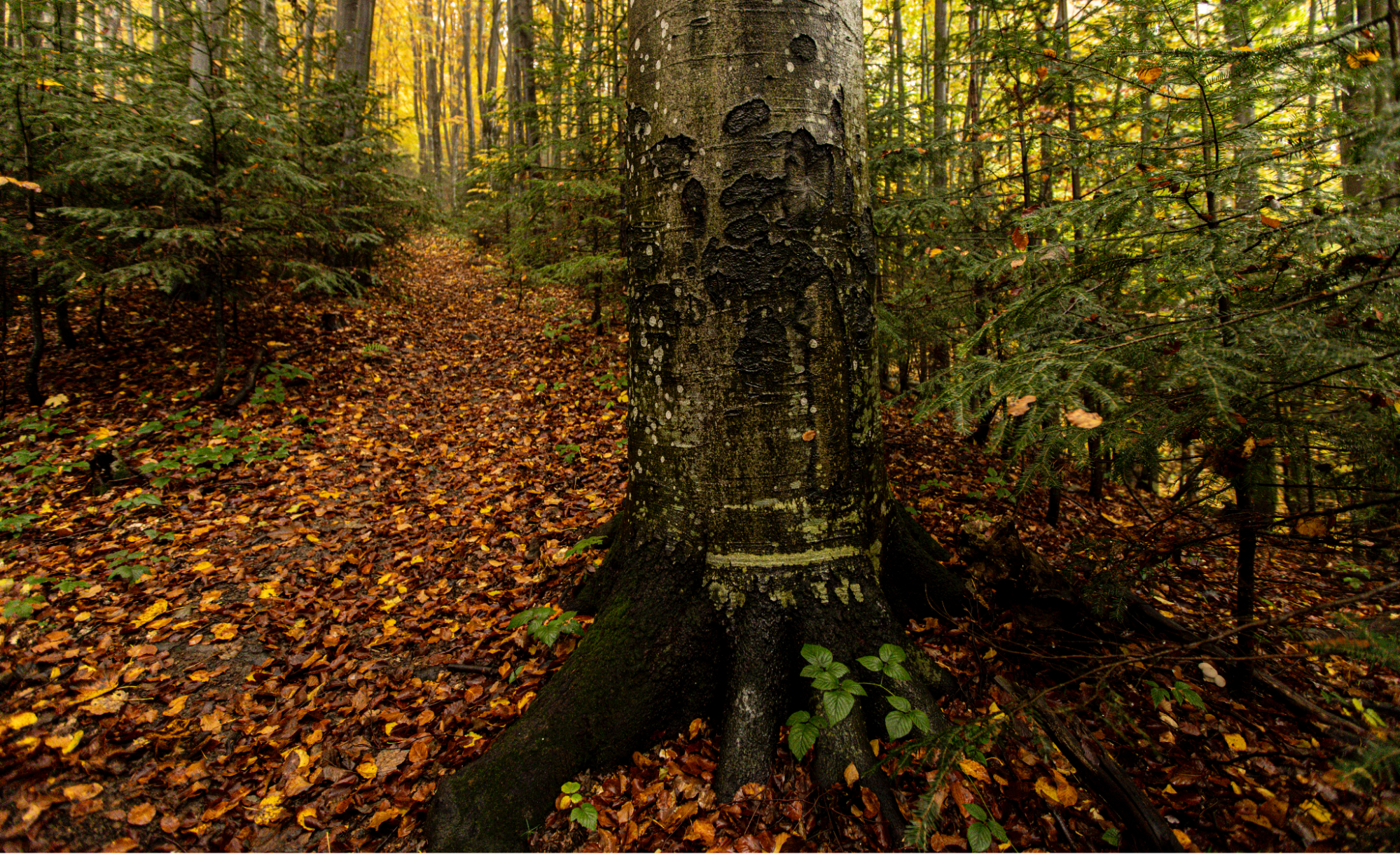
Pristine beech forests in the Uzh National Park.
While our journalist and photographer walked up the mountain on wet rocks made slippery by heavy rain, the forester told us about the mushrooms found along the road. He shares that he collected about 150-200 kilograms of porcini mushrooms last year. For him, as well as for many other locals, this is an additional way of earning. Collecting mushrooms and berries still plays an essential role in the daily life of Stuzhytsia residents.
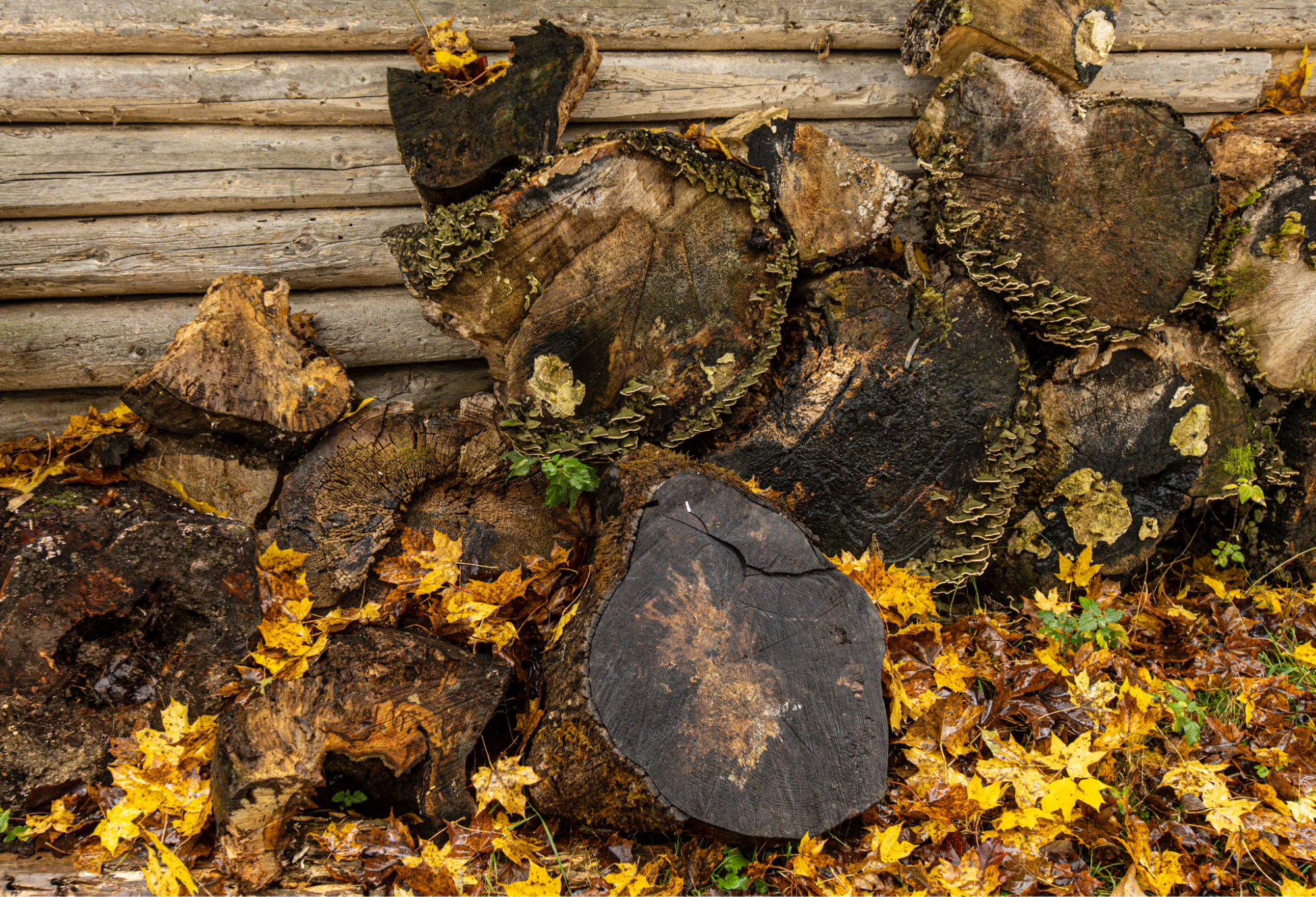
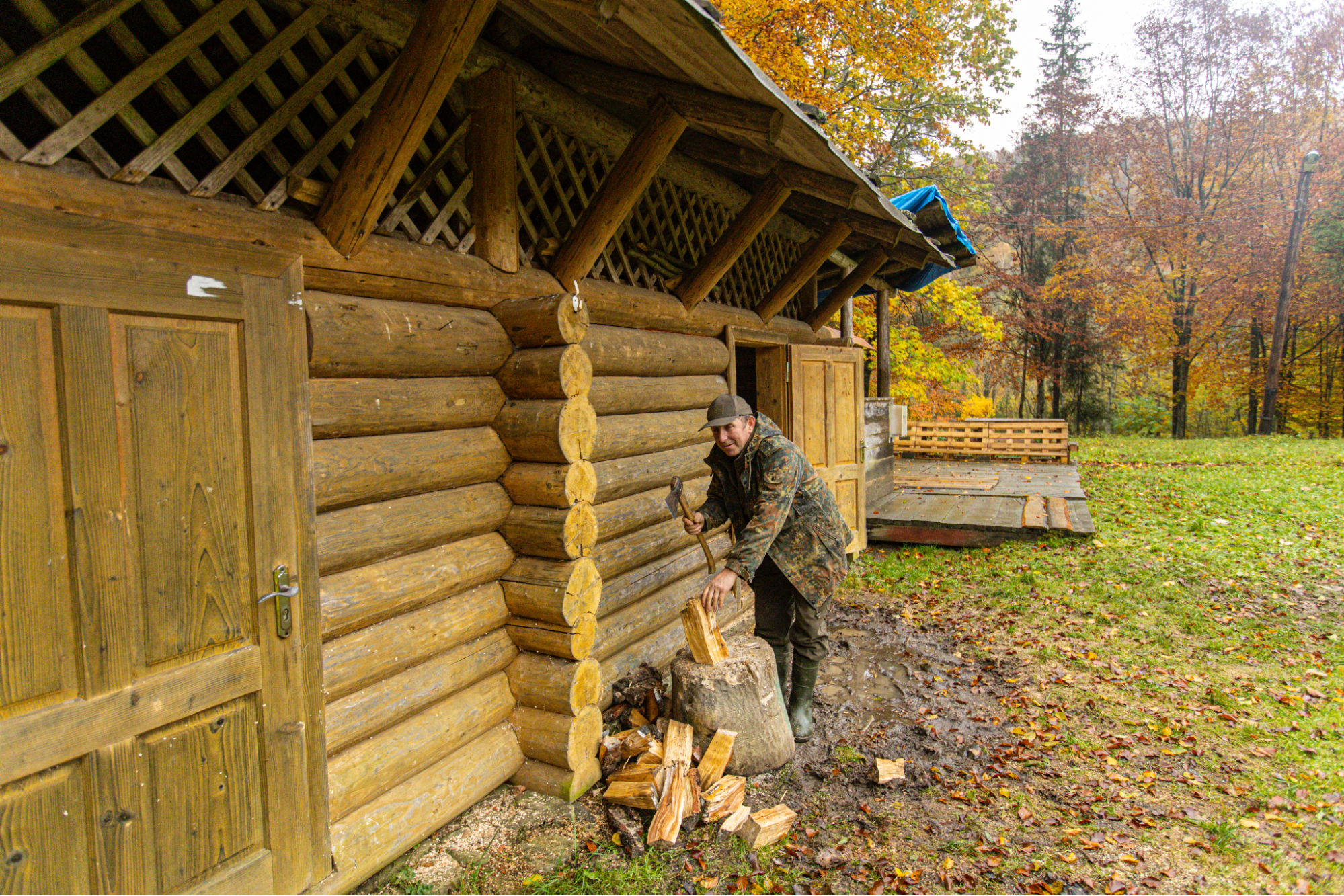
The main resource for the locals is wood, especially beech, which is the most energy-intensive. This is the only way to heat the house and cook food in local non-gasified villages.
With the establishment of the national park, it was forbidden to cut down trees, as people have been doing on these lands for centuries, just like picking mushrooms for sale. Therefore, in the nineties, there were many opponents to the creation of the park.
Despite this, the forester says that many locals do not need nature protection because the traditional gathering would not harm the environment in terms of its volume and intensity. To the remark that, in the absence of the national park, they could build a recreation complex here, cut down the forest, or simply use the wood as a resource for sale, the answer is: the community would not allow it.
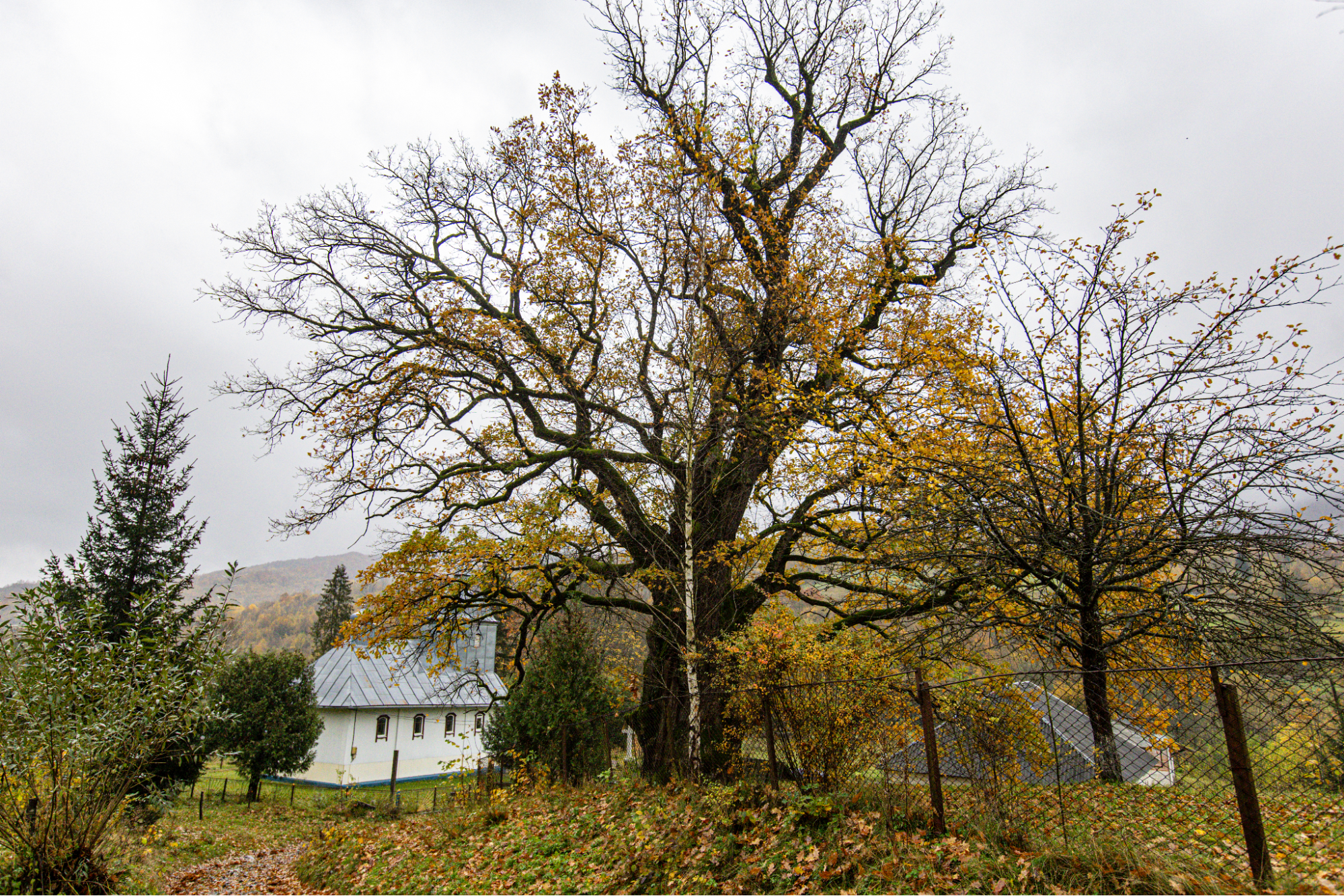
A thousand-year-old oak in the village of Stuzhytsia is recognized as a natural heritage by UNESCO.
The thousand-year-old oaks located right next to the church, in the middle of the village, are a witness of the local spirit and ability of the locals to resist. Two trees of respectable age are recognized as natural heritage by UNESCO. Both still have leaves on them, but in the eyes of the residents of Stuzhytsia, they have a significant difference. The first, according to belief, brings health. It is said in the park that the former director, after learning about a severe illness, himself came to rest his back against the old oak tree.
The second oak was used for a completely different purpose. Inside the trunk, which once burned out during the dry law in the 80s, which prohibited moonshine brewing, the residents of Stuzhytsia hid a moonshine apparatus. The tradition of making moonshine is preserved in the villages to this day, but fortunately, the UNESCO heritage is no longer used for this purpose.
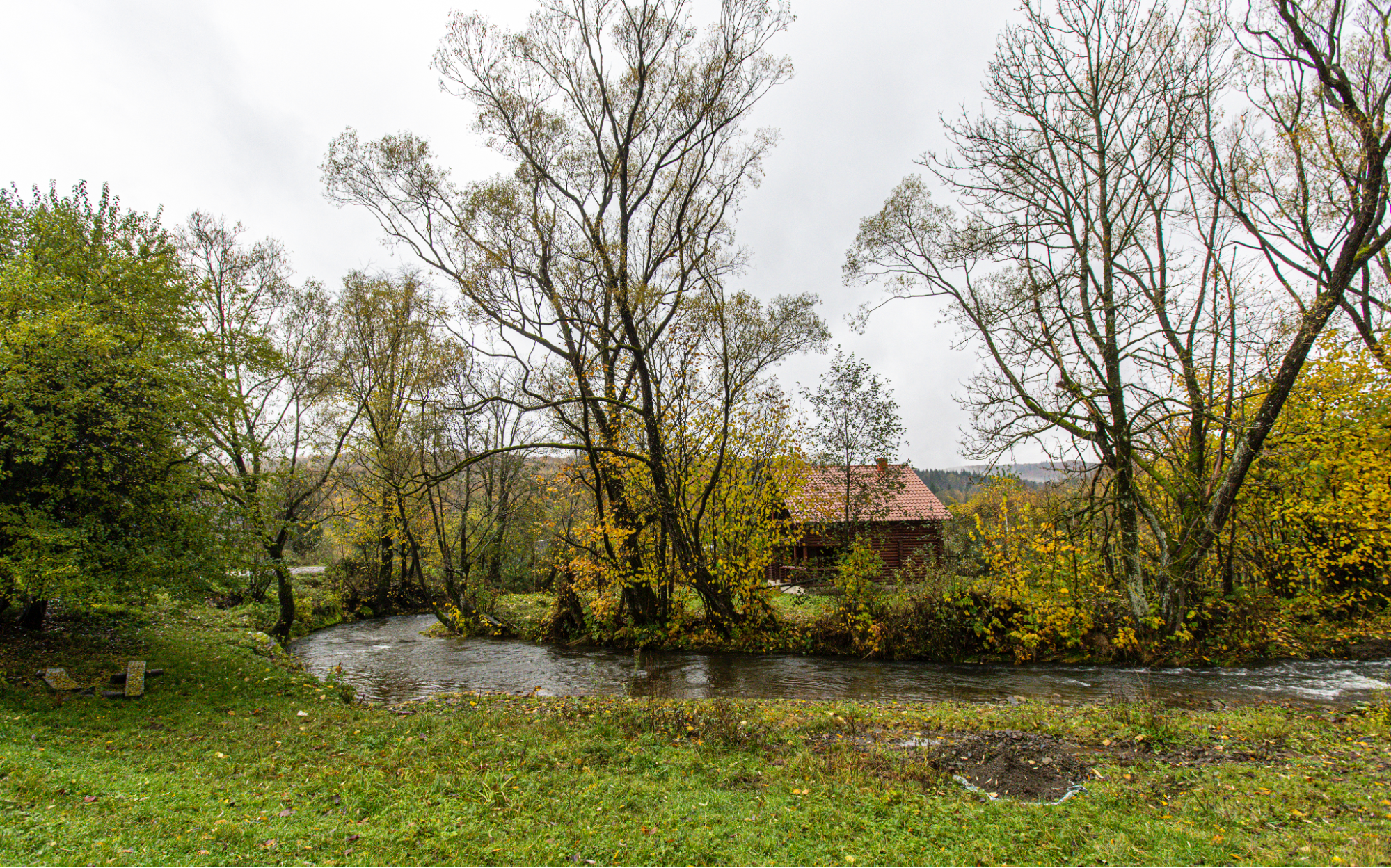
The Uzh River in the village of Stuzhytsia. The locals don't recognize the name Uzh, but they say that the river was called Svitla long ago.
Another interesting type of activity is fishing. The village of Stuzhytsia stretches along the River Uzh. There are small artificial ponds filled with water from the river next to almost every house standing above the water.
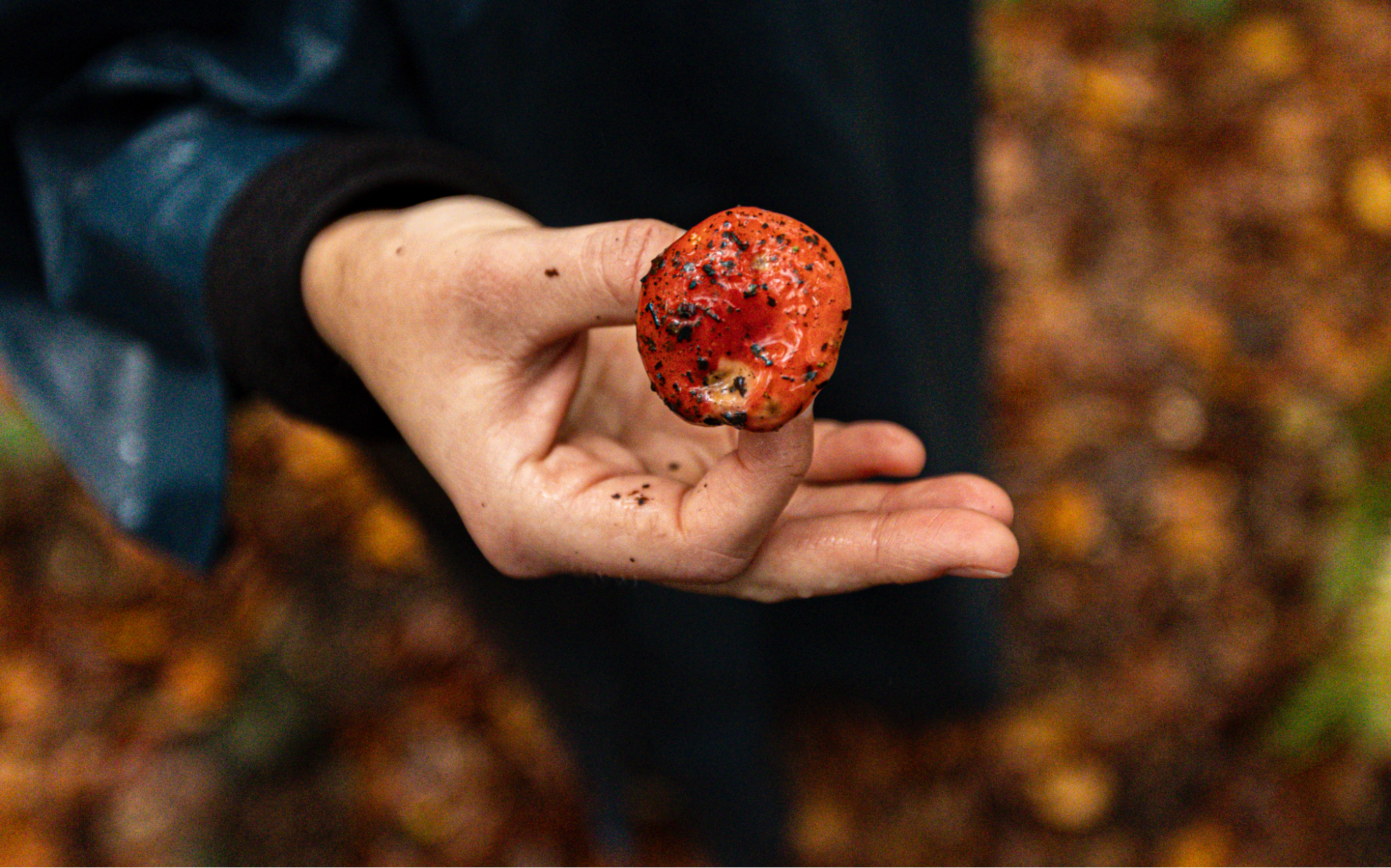
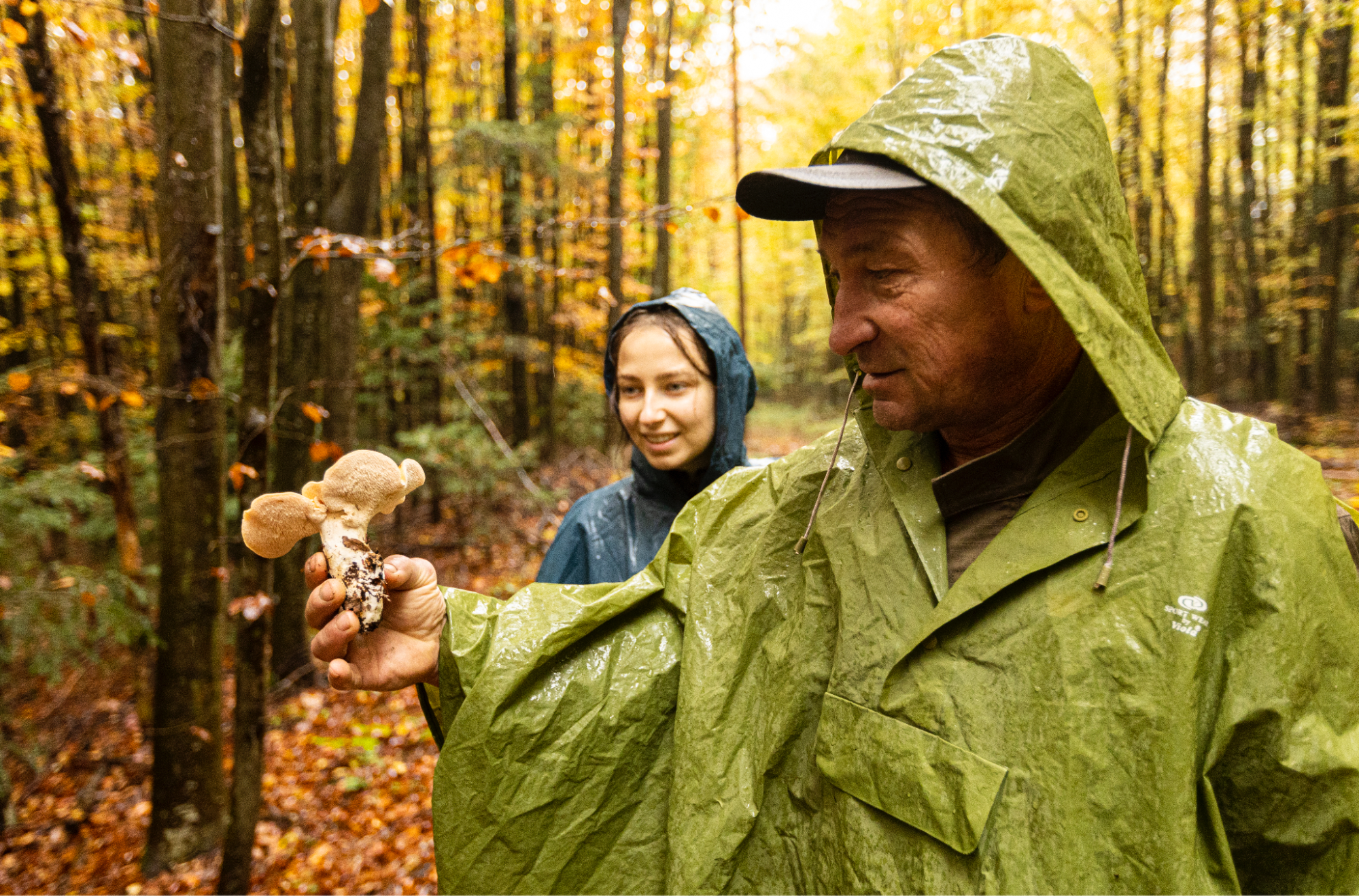
Picking berries and mushrooms is still one of the ways local residents earn money.
This has been done here for a long time to breed fish. However, since hunting has been prohibited since the establishment of the national park, many otters have been bred near the park, and they do not mind eating fish. For several years, the owners of the ponds tried to protect the harvest with nets and fences, but the otters proved to be more agile, and people had to retreat from traditional fishing.
Only one conclusion can be drawn here — the creation of nature protection institutions really affects the increase in the fauna population.
A small deception with a large meteorite
One of the charms of the Uzh National Nature Park is where the Knyahinya meteorite fell, which landed directly in the Chorni Mlaky tract in 1866. The site attracts not only tourists. Even Jules Verne, a classic of science fiction and adventure literature, once visited here, and a few years ago, a scientist came here to find the influence of a cosmic body on the environment. The search was successful: an insect was found, the species the scientist could not identify. However, this tourist route is now prohibited for tourists.
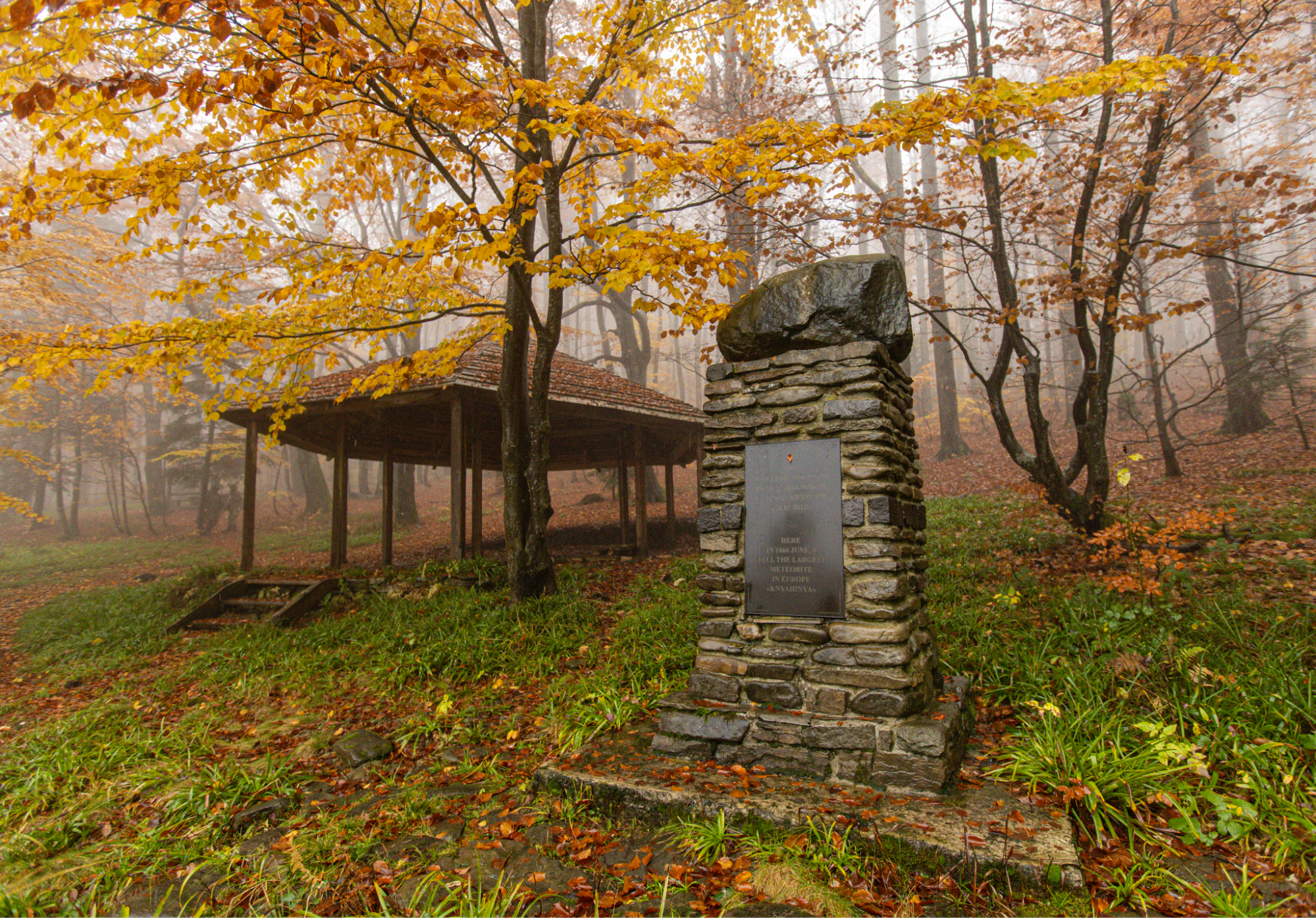
Before the start of the war, tourists were invited to the place with a monument with a small stone, and there was also a tiny hole — no more than one and a half meters in diameter. Guides say that this is the place where the meteorite fell. However, there is a nuance. Not all tourists know about the peculiarity of this place and perceive the plot as true, but the real meteorite is kept in the Vienna Museum of Natural History.
The actual place of the fall is fifty meters away from the tourist area. This is a vast ravine where not a single tree grows — a rather strange picture, where everywhere but here is a dense beech and juniper forest. For 157 years, the hole left by a block from space has slightly decreased in size but has not been able to renew life.
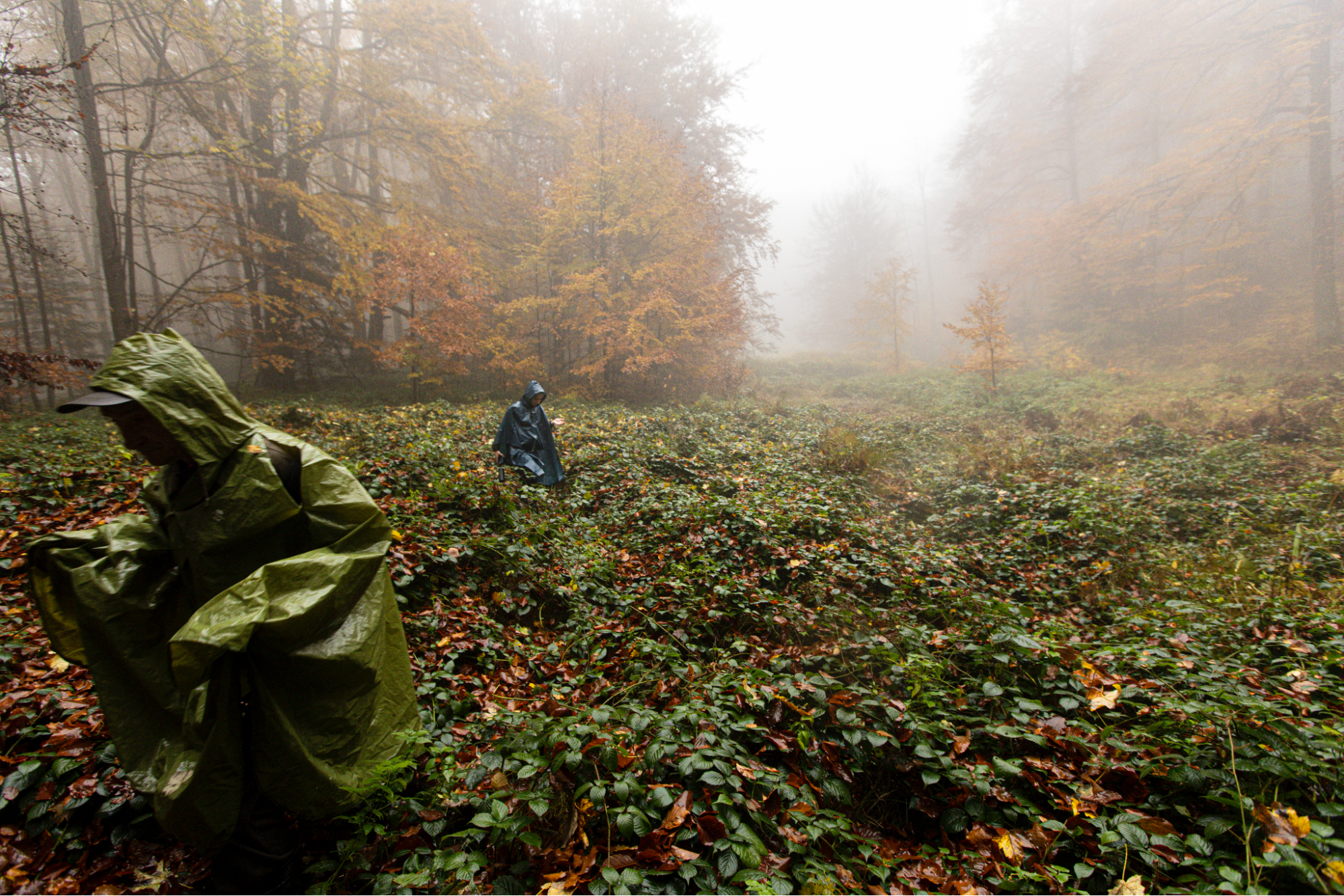
The place where the Knyahinya meteorite fell, Chorni Mlaky. The area without trees is a crater left by a meteorite in 1866.
In fact, the value of the territories around Chorni Mlaky is ancient beech forests. Huge trees hide their leaves high in the mist. Among European countries, Ukraine has the most significant number of beech forests in the Carpathians. Once, these trees covered 40% of the territory of Europe, but now there are fewer of them.
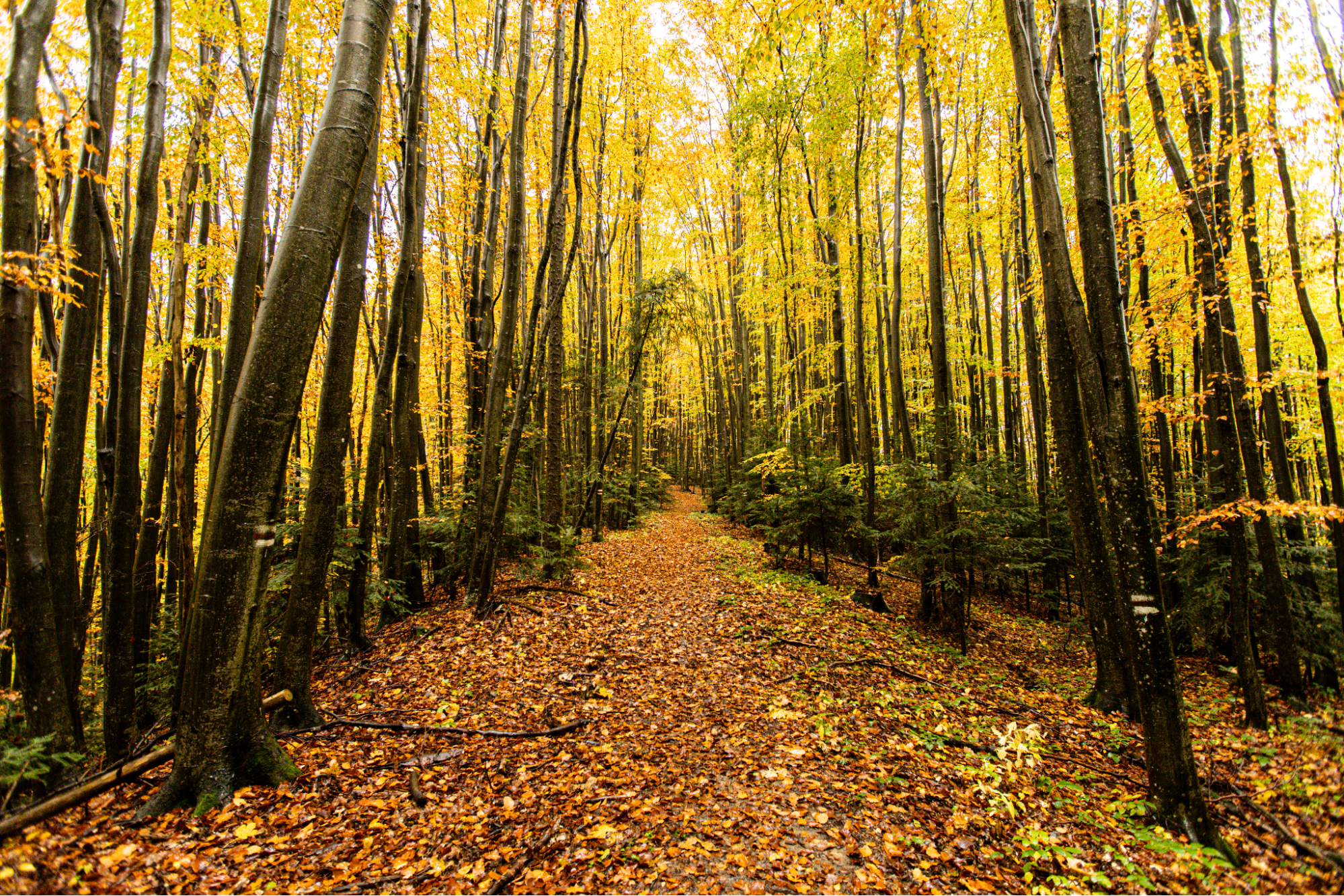
A natural beech forest cannot be restored, and it takes several centuries for it to grow on its own. Here, anthropogenic influences have hardly affected the old-growth beech forests, and they look like they did in ancient times.
The longer the war lasts, the greater its impact on territories far from the front line
Due to the war, the influx of tourists to the reserve significantly decreased. Now, along the path leading to Chorni Mlaky, there are photo traps of the border guards — it is impossible to pass through the forests unnoticed, and the territory is completely closed to tourists.
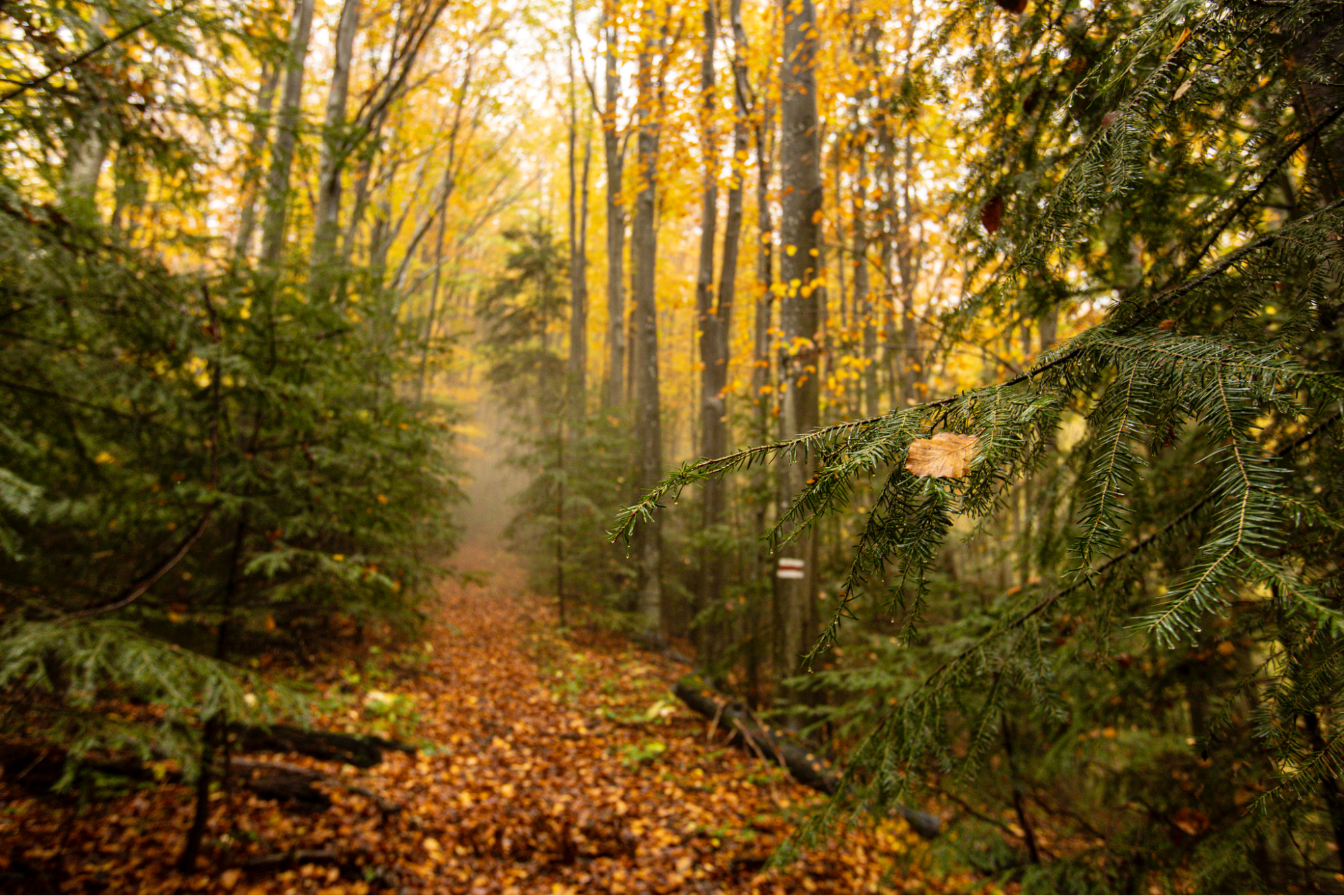
The paths of the Uzh National Park, which are currently closed to visitors due to the proximity of the state border.
People do not trample vegetation, do not leave garbage, and do not scare animals — such an impact can hardly be called negative. In addition, the camera traps, which were placed to prevent illegal migration, perform another role. Border guards share photos of predators and ungulates they managed to capture in the forest with scientists. Inna Kvakovska says that the photos are then exchanged with parks in Poland and Slovakia to learn more about the migratory corridors of animals and their numbers.
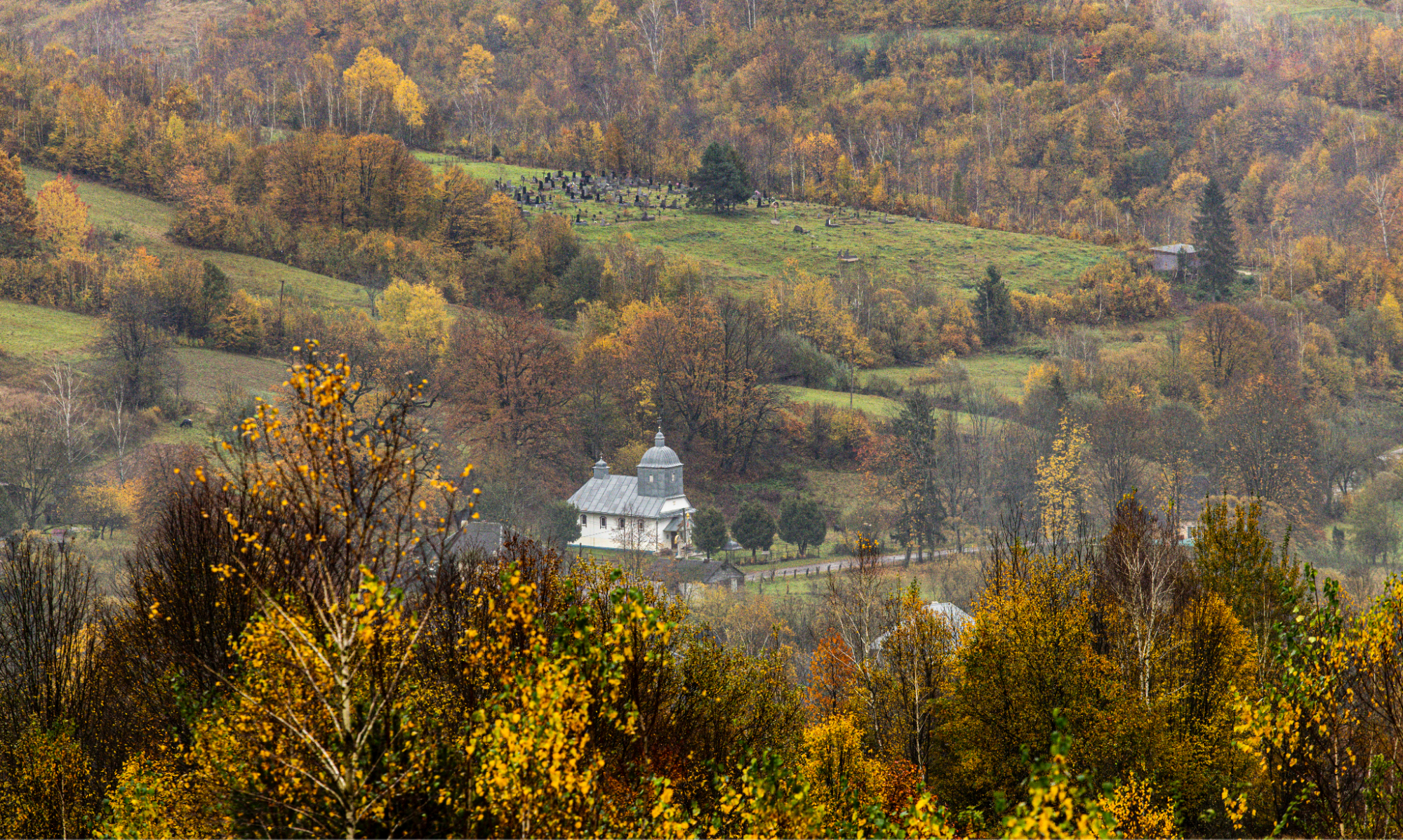
A view of the Stuzhytsia church, which could have been included in the UNESCO cultural heritage list but was not. The residents decided to sheathe the old wooden building with siding so that it would be better preserved, and this is already an unauthorized intervention. But the thousand-year-old oak trees behind the church are a part of UNESCO's natural heritage.
Migration corridors of bison and deer pass through the territory of the Uzh National Park. There are a lot of them here, but there is something that can lead to a significant decrease in their number.
"When the war started, we thought it was far away. But the longer the war lasts, the closer it gets to us," says Kvakovska.
In February 2023, the Ukrainian parliament adopted a law according to which the border strip should expand to 2 kilometers. That is, lands are removed from the objects of the nature reserve fund and transferred to the State Border Service of Ukraine.
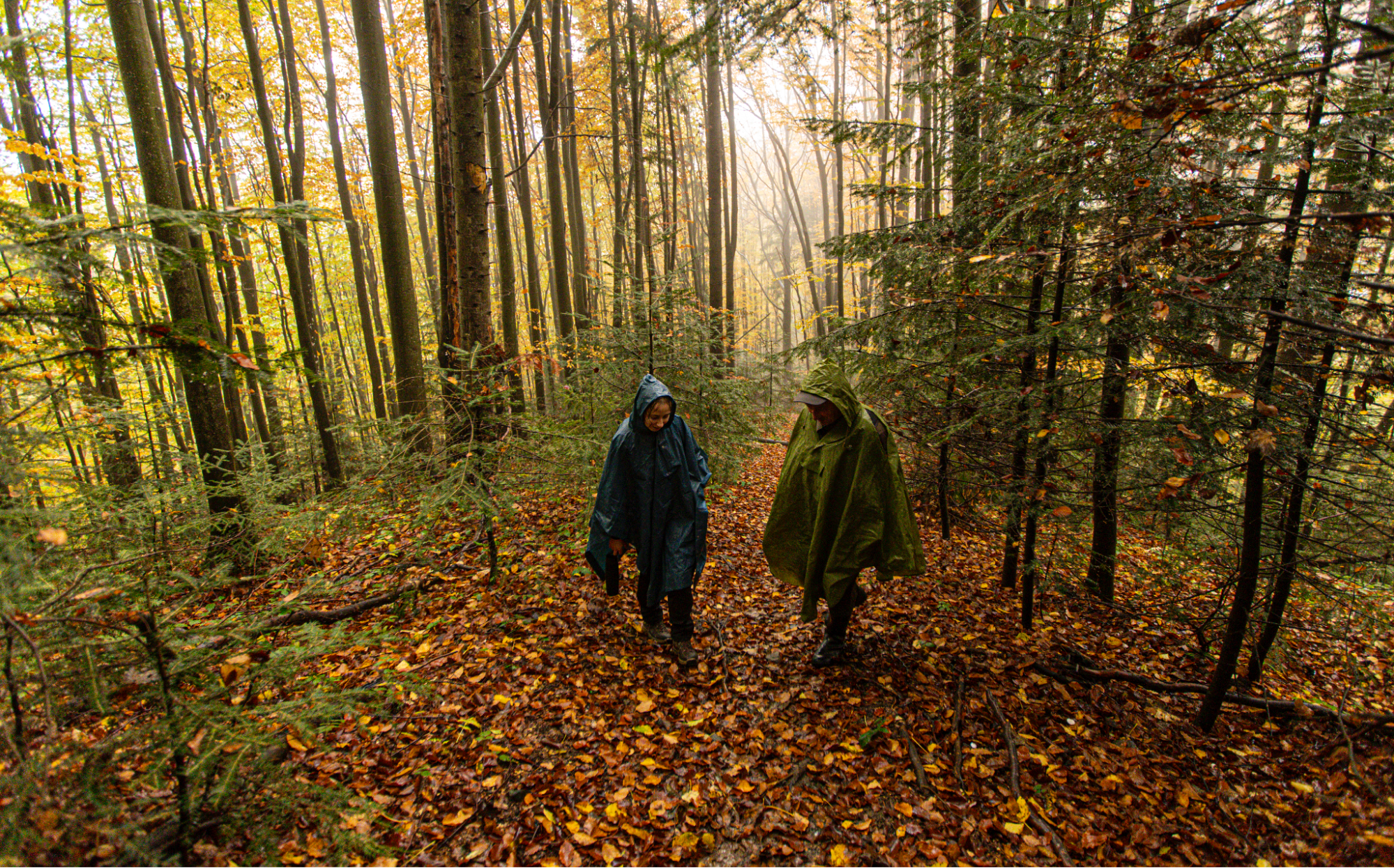
One of the problems in the reserve is the expansion of the border strip to 2 kilometers. There is a risk that animals will not be able to migrate within the boundaries of the transboundary reserve.
"There is a protected nuclear zone of the UNESCO heritage where it is planned to withdraw our territories — the beech primeval forests of the Carpathians. These are the places where we don't have the right to interfere with nature, and the border guards want to lay special nets there, which are cut in attempts to climb over them. In this case, large mammals cannot migrate between borders," says Kvakovska.
The war significantly affected the activities of the Uzh National Park. Some employees went to the front, and many people from the territory died. Now, it is difficult to hire new personnel for the security service because there are no people — with the beginning of the war, part of the local population emigrated abroad.
Why are farms disappearing?
The outflow of people is not only related to the war. The territories where the biosphere reserve is located are depressed. A vivid example of disappearing villages is on the territory of the Boikivshchyna National Park.
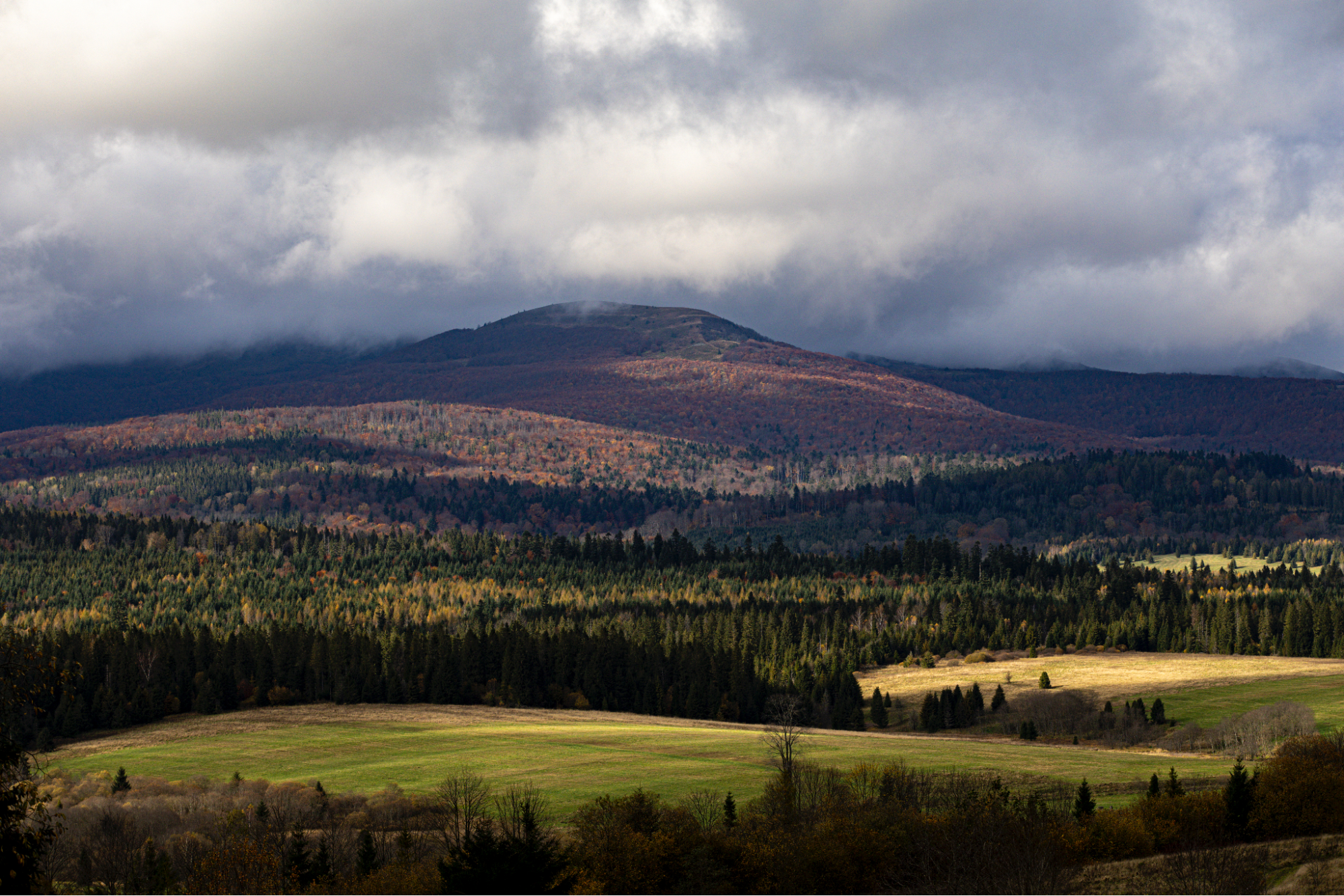
Views of the Polish Bieszczady Mountains from the National Nature Park Boikivshchyna.
Only six out of 12 houses are inhabited in the Benyova farm, mostly by older people. Near their homesteads are empty sheds for livestock, chickens are grazing in some places, and beehives have even been preserved near some houses. Some residents keep cows and small gardens — that's what they live on.
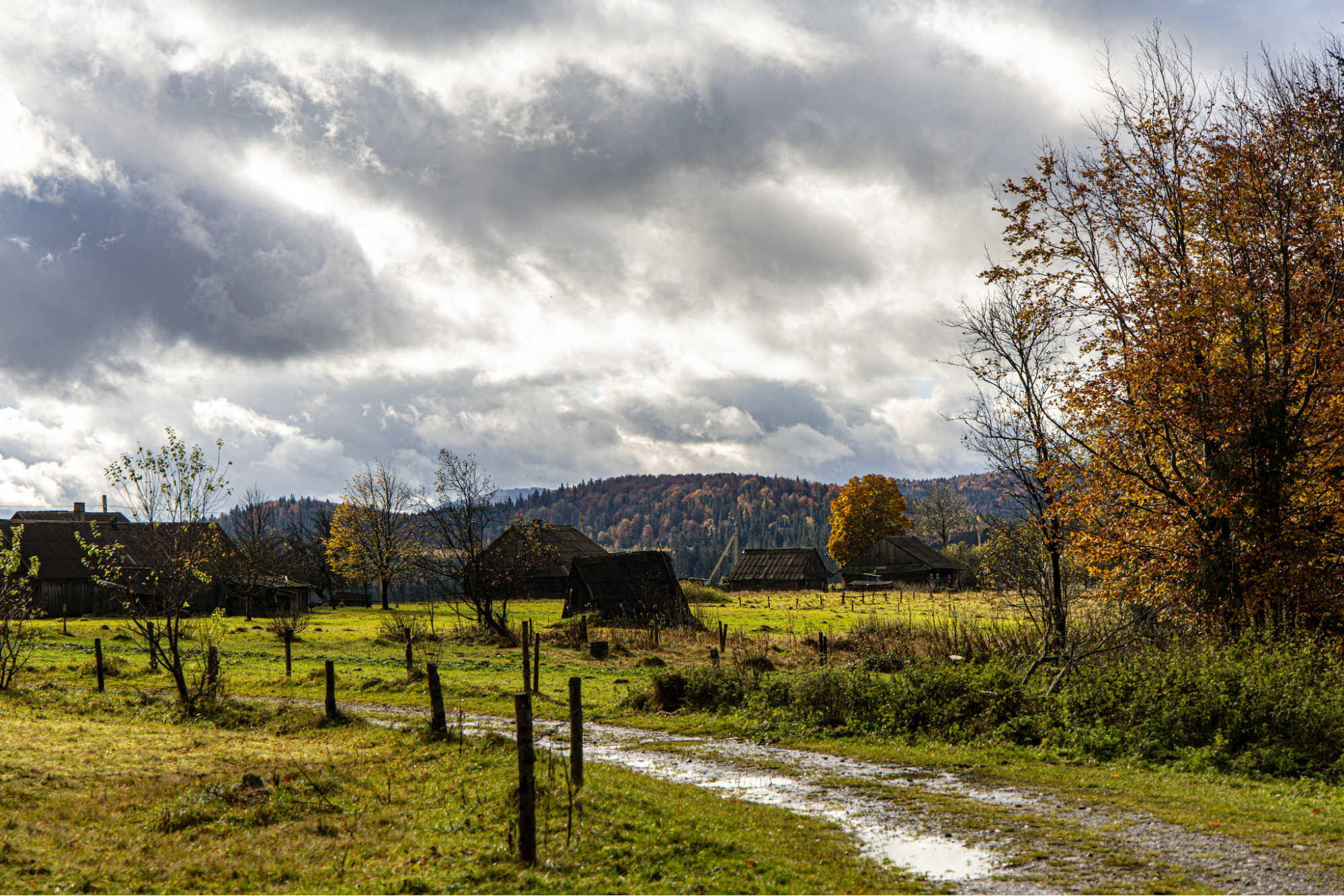
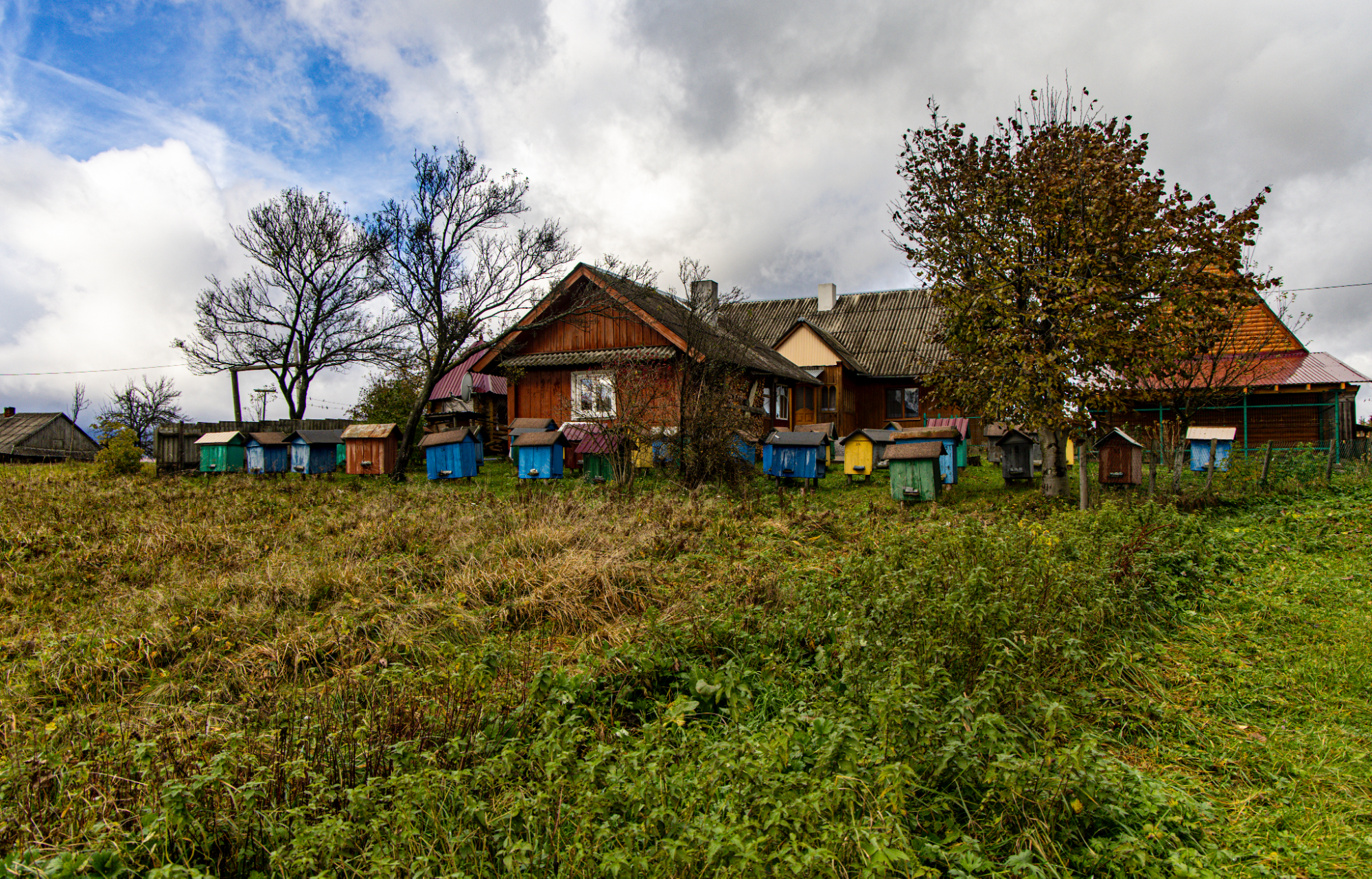
The village of Benyova has almost no inhabitants left.
These fans were founded after the Vistula operation as part of the "Agreement on the Mutual Exchange of Population in Border Areas." This was the name it had in the Soviet Union, but in reality, the operation was ethnic cleansing. Ukrainians were evicted from the territories where they lived from time immemorial, and the memory of ancient events lives on among the locals to this day.
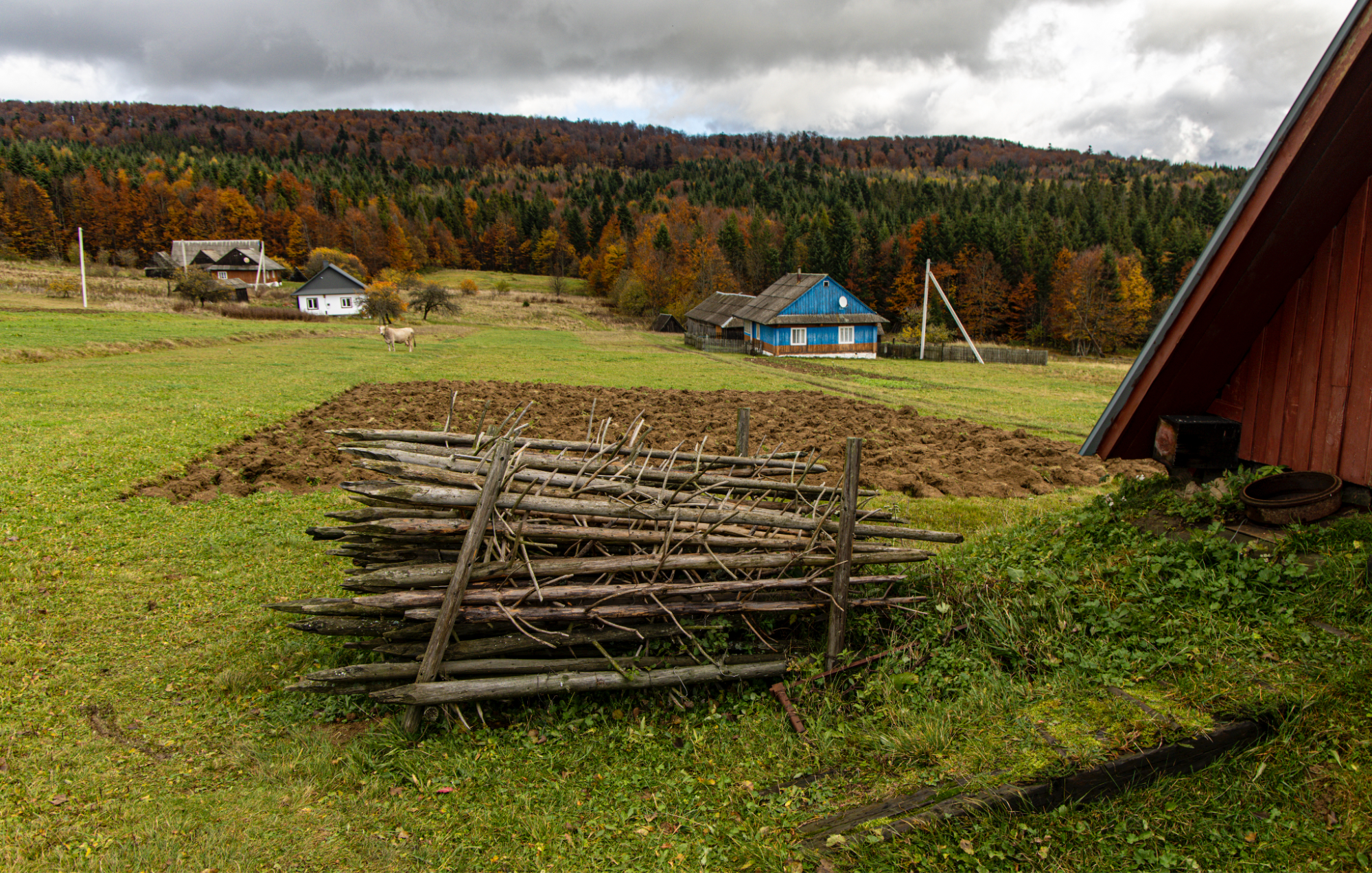
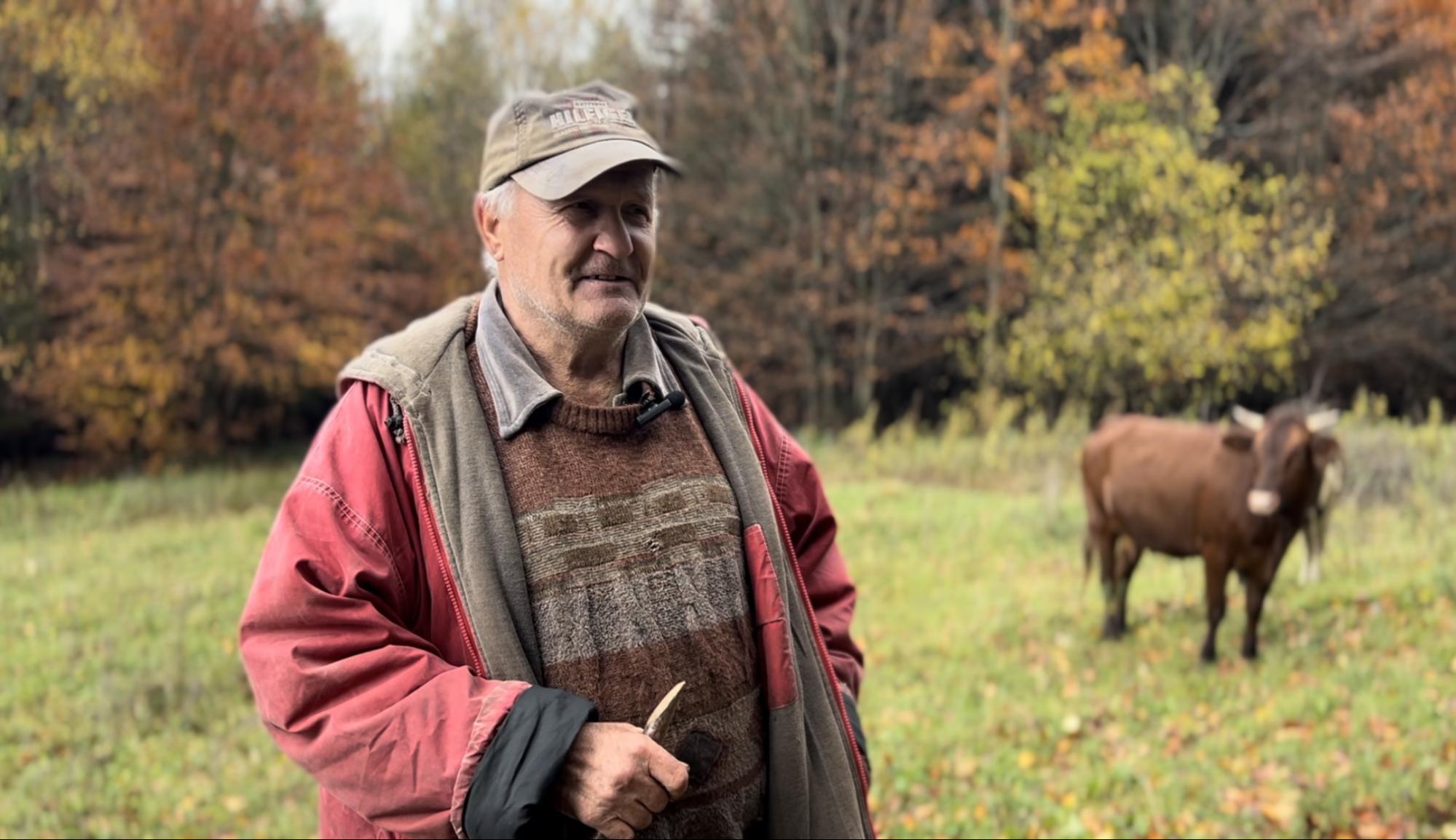
The Benyova farm huts appeared after the tragic historical events associated with the Vistula operation. In the second photo, a resident of Benyova offers journalists to buy his cow.
The cultures of the peoples in the border areas are closely intertwined. Modern Poles, the descendants of once evicted Ukrainians, coming to Boikivshchyna, remember how their grandparents spoke the same language and sang the same songs as locals, and almost every resident of Boikivshchyna has a tragic story related to the events of that time.
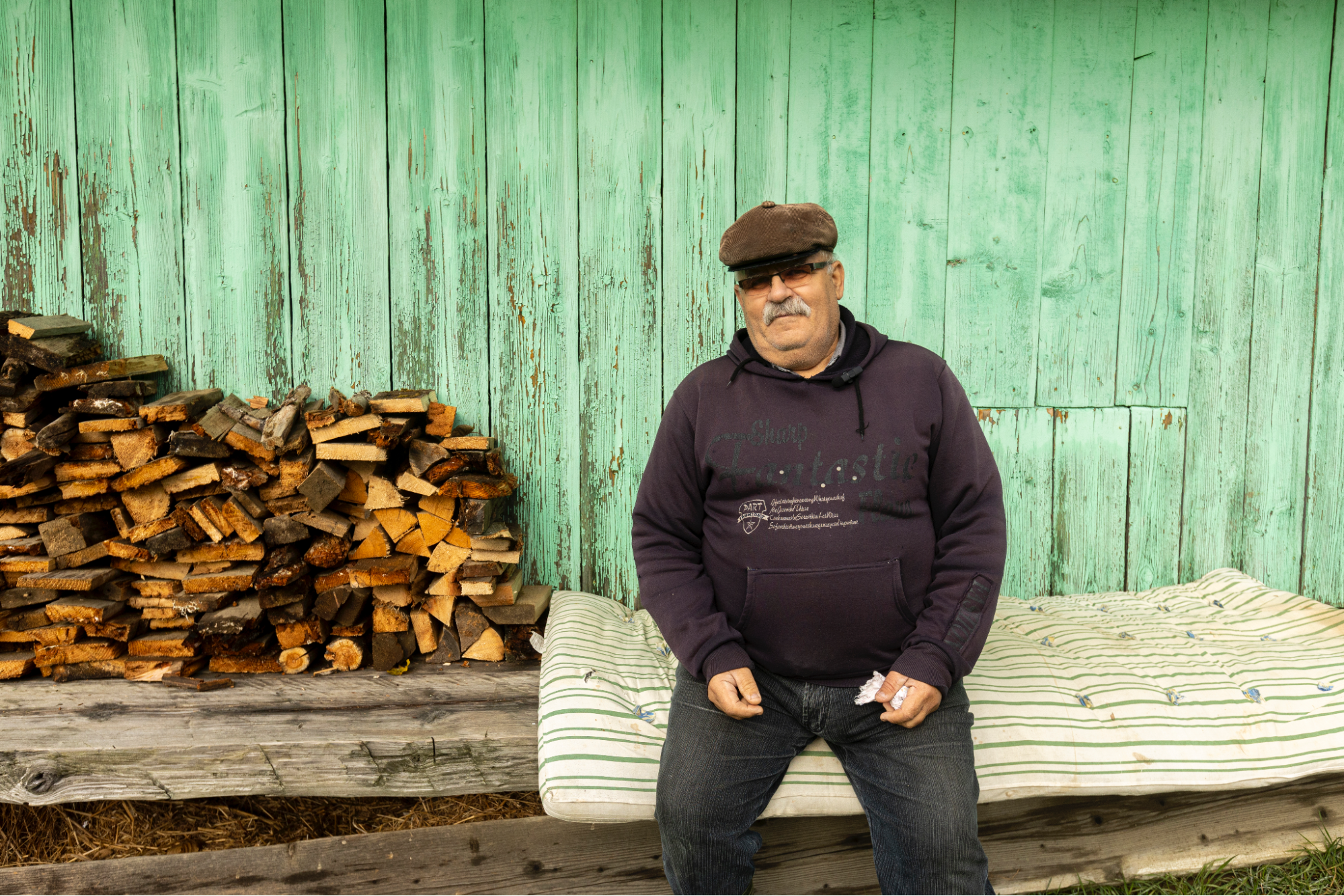
Vasyl is the last resident of the farm next to Benyova.
There was a village near the border where only one hut survived. Vasyl and his wife come here in the warm season. Vasyl was born and raised here and, therefore, takes care of the house and remains the only bearer of the memory of life on the farm. He has no descendants, and when Vasyl is gone, his land will turn into a forest: it is already encroaching on the plot, taking the meadows where cattle once grazed.
Memory cannot be erased
Memory bearers are people, and there are fewer and fewer of them in these territories. Globalization impacts even the most remote villages, and those who preserve history, like birds, fly to the big cities.
However, everything goes in a circle, and people eventually return to their native territories. There is a stone church in Sokolyky, a dead village located between the border of Ukraine and Poland. It was once built by settlers. However, after the Vistula, the settlement was emptied. Later, the Soviet authorities used the premises at their discretion: for a warehouse.
Now people come here twice a year again. They came despite COVID-19 restrictions and are coming despite the war — they are the descendants of those settlers who lived here more than a century ago. Services are held here twice a year. Two sisters, whose parents lived in Sokolyky, visit the church yearly and say that this is where they feel their roots.
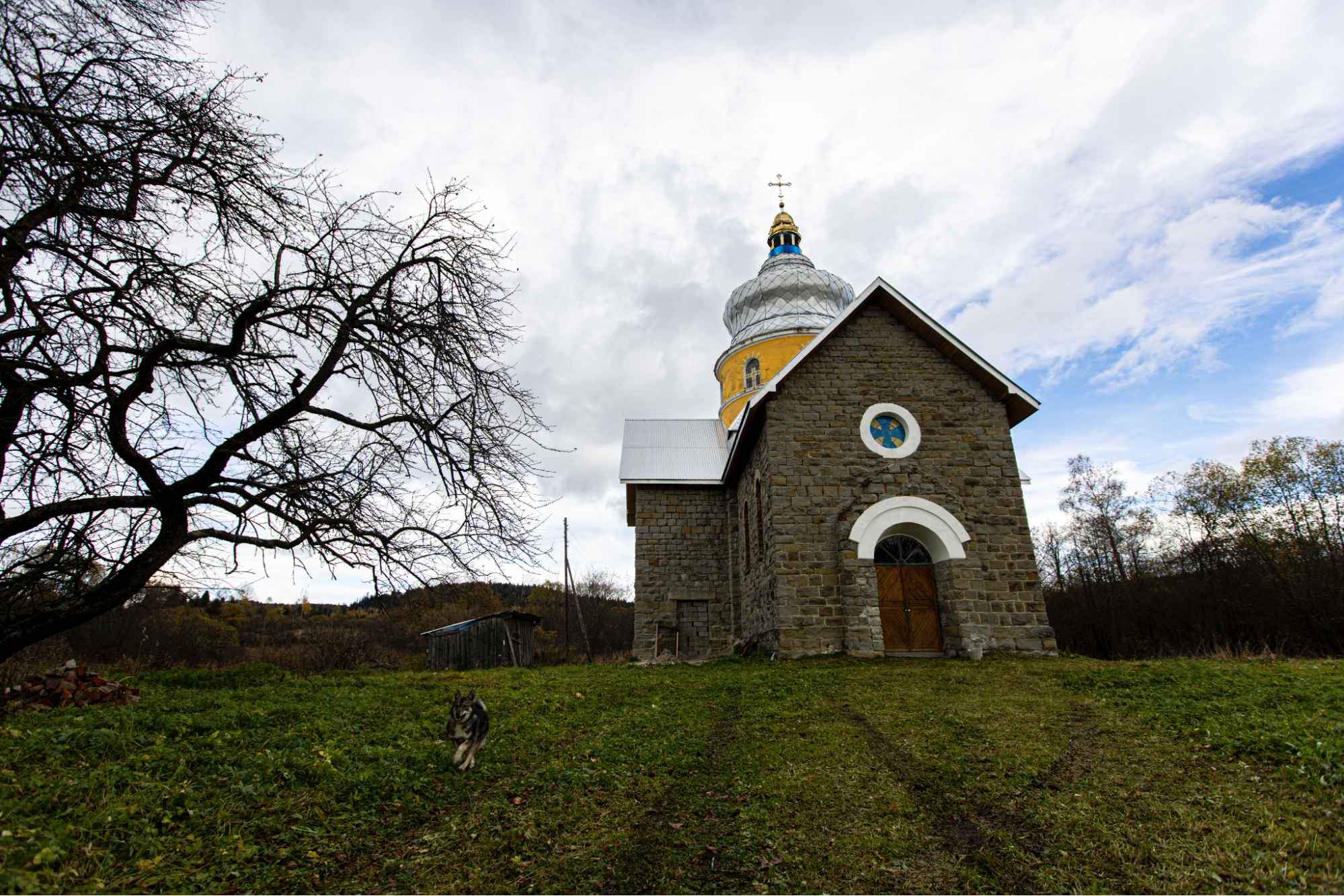
The abandoned church in Sokolyky is currently being restored. Services are held here only twice a year.
Traditions live and continue to develop. We met a group of young people on the way from Sokolyky, near one of the old wooden houses. Schoolchildren took photos for the school album in the national costumes of the Boikivshchyna region. Although they will not stay in their native village, they are assured they will remember their native places, culture, customs, and nature.
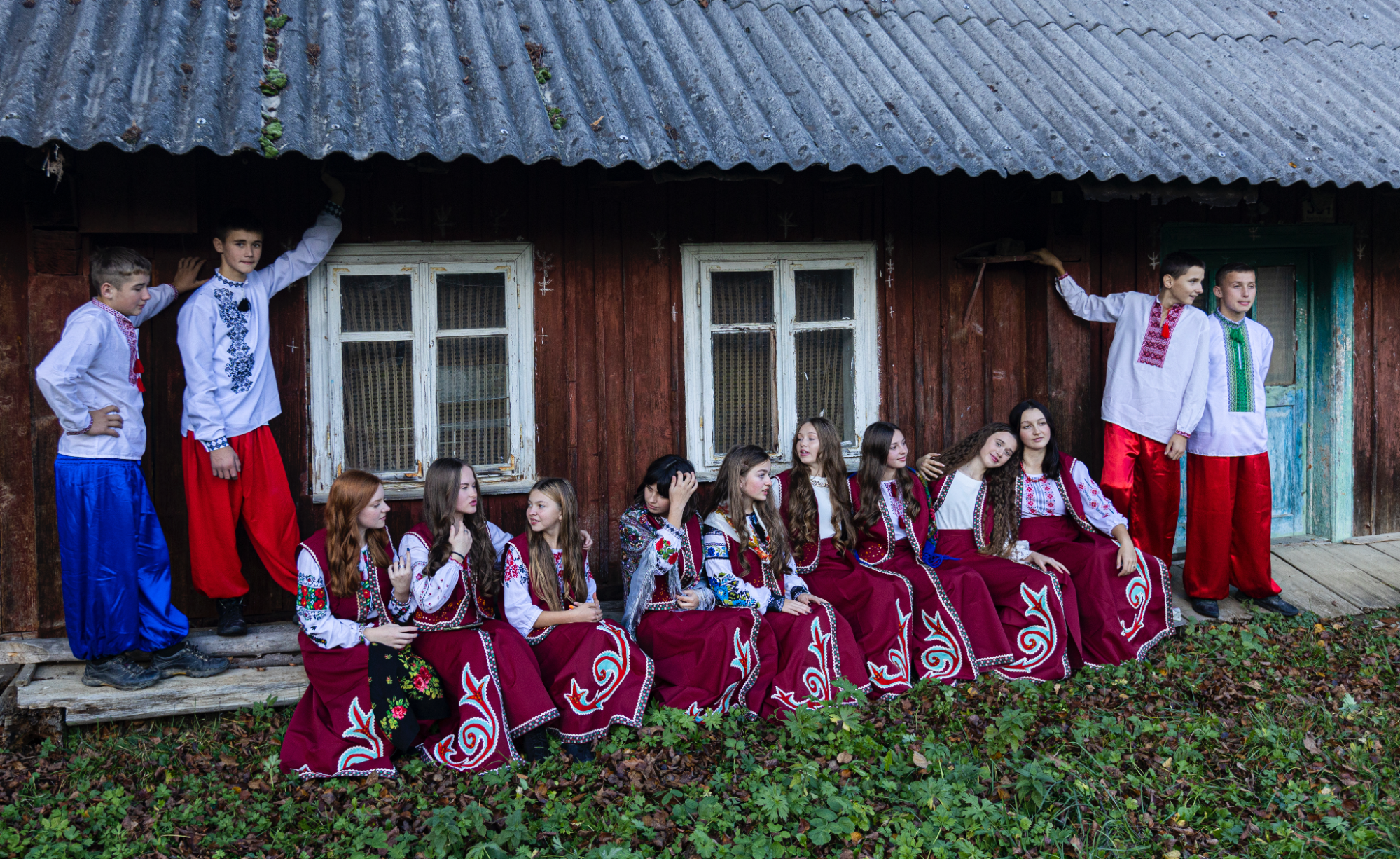
Schoolchildren who took photos for the graduation album in traditional clothes.
All that needs to be done now is to stop the brain drain, get the parks back up and running, and, of course, win this nine-year war.
Фото: Микола Тимченко
The project "Biosphere reserves of Ukraine: stories of war in environmental protection institutions creating a green future" was created with the support of UNESCO. The designations used, and the presentation of the material do not imply the expression of any opinion whatsoever on the part of UNESCO concerning the legal status of any country, territory, city, district, or its authorities or concerning the delimitation of its borders. The author is responsible for selecting and presenting the facts in this article and the opinions expressed therein, which are not necessarily the opinions of UNESCO and do not bind the Organization.
Newsletter
Digest of the most interesting news: just about the main thing



